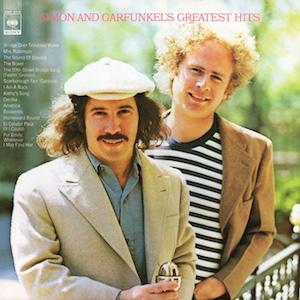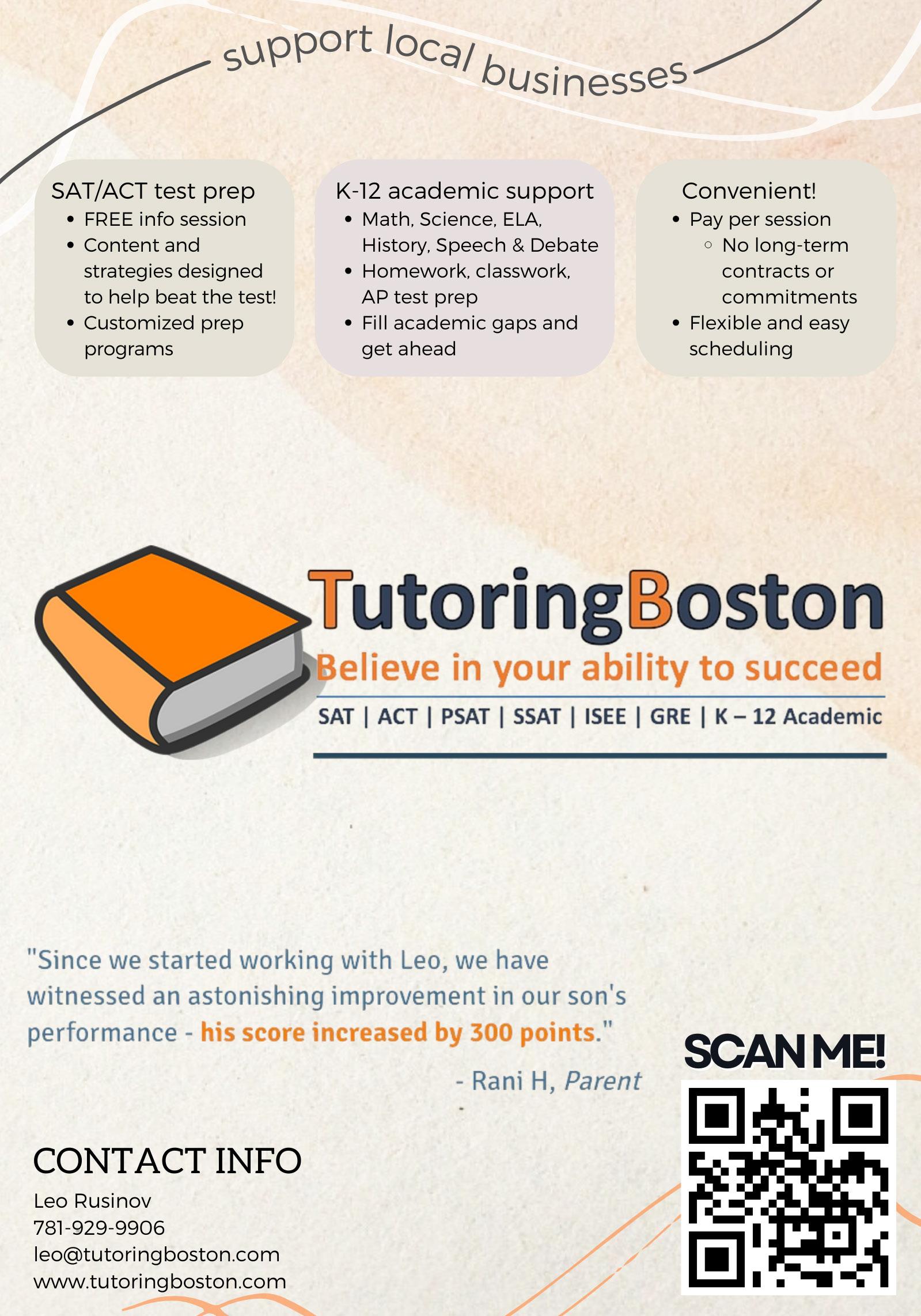
Setting the Standard
Amid ongoing changes to standardized testing requirements, the education system rethinks its approach to student evaluations.











Amid ongoing changes to standardized testing requirements, the education system rethinks its approach to student evaluations.










Newton Health and Human Services and the Coalition for Community Wellness will continue to explore ways to use these funds in sustainable, equitable and meaningful ways to address lives being impacted by the opioid and substance use epidemic.
Ruthanne Fuller Mayor via newsletterTis is a public health crisis . . . and we need every dollar out there to minimize harm and save lives.
John Velis State Senator By Alex Zakuta
On March 21, South’s chapters of the American Civil Liberties Union (ACLU) and High School Democrats of America (HSDA) collaborated to host the annual Civics Day at South. Tese organizations brought together local activists, educators, politicians and students to share their experiences with civic action. Tere were four panels, including a selection of local professionals, changemakers, students and teachers.

Over the next 15 years, Newton will receive over $3.8 million that will be directed towards combating the opioid crisis and supporting Newton residents through prevention, treatment and recovery programs. Tis money is Newton’s portion of Massachusetts’ settlement money from opioid manufacturers, distributors and pharmacies.
Newton’s Department of Health and Human Services and the Coalition for Community Wellness plans to use this money to partner with the Newton-Wellesley Hospital Substance Use Services Clinic to implement opioid overdose rescue kits in public buildings and organize prevention programs.


Due to a massive infux of foreign migrants into Massachusetts, the State Senate plans to allocate over $840 million for Governor Maura Healy to spend on state-run shelters during scal years 2024 and 2025. Tis plan will also implement a nine-month limit on how long families can stay in a shelter.
Currently, Healy spends approximately $75 million a month on the statewide shelter system, which houses 7,500 families. Without approval from Massachusetts legislators for an increase in the state’s emergency shelter budget, Healy’s administration is expected to run out of funds to combat the housing crisis in April. Lawmakers are working quickly to fnd a solution.
photo courtesy of the Daily Hampshire Gazette
We hope to promote civic engagement among students and to get people excited about participating in their community, and help people understand some of the opportunities that are available to them.
Ishaan Tewari ACLU co-president, class of '24Getting involved with political movements at a young age fosters a love and passion for voting and being aware of elections, and that produces a stronger democracy overall.
Nora Linssen Civics Day panelist, class of '24
news Massachusetts is also seeing a migrant crisis like no other state in the nation, one that has put our emergency family shelter system and our budget at a breaking point at the moment.
photo courtesy of WBUR
Aaron Michlewitz State RepresentativeIf the money were to run out without any action on the plan, we would be talking about thousands of these families suddenly on the street in many communities across the state.
Michael Rodrigues State Senator
I have had two very long and meaningerent careers. I'm a clinical psychologist, so I worked for many years in mental health before running for the legislature. Close to 30 years of working mental if you count straight after college, and then I've been serving the legislature for 25 years. By the time I fnish this year, it'll be 26, so I'm really ready to retire from my working life. I'm not just retiring from the legislature, I’m retiring, retiring. I would just say thatI feel very fortunate. I've had these wonderful, interesting and meaningful careers, but it's just the time of an age where I'm older, an age where it's time to be a little quieter, a little less public. What I should say is there's nothing I'm tired of, I love being in legislature.
Q: What inspired you to ce 25 years ago?
My run for the legislature wasn't my ce. I had run earlier and served as a Newton, what we then called an alderman. Now it's called the city council. . I was brought up with a sense of the importance of social justice work, and trying to make the world a better place. Actually, being a psychologist was because I was brought up to be part of a helping profession, to take care of people. Getting involved in politics, in a certain sense, is taking care of people on a bigger scale. Not just one on one, but more in terms of public policy.
Q: How does your background in psychology impact the work you do as a legislator?
Being a psychologist made me very concerned with hearing more about people not having access to mental health services. I've gotten involved a lot with criminal justice issues, but mainly as far as how people with mental health and addiction issues land in the criminal justice system. I recognize how sometimes our society just thinks in terms of punishing behavior, instead of understanding that certain kinds of behaviors sometimes come from an illness, and I've been able to give voice to that.I have a lot of legislation to to address that and to try to make sure people land in the healthcare system rather than the justice system.
Q: Would you say that your work in criminal justice has been your proudest accomplishment?
A: There are lots of lots of accomplishments, they're not all related to my being a psychologist. One of the issues that I've worked on a lot is equal rights for women. I'm very proud there were two laws that were passed because of my initiative, which ended the charging women more than men for the same disability insurance policy, and also a law that ended the practice of charging women more than men for the same annuity or retirement. policy. I was part of I wasn't necessarily the lead but I was part of the legislature when we made sure that marriage equality would be the law of Massachusetts. I'm also proud of the work I've done as far as the environment. I have my bill to protect our public parks passed into law last session.
Q: Over the past 25 years, what has your relationship with your constituency been like?
A: I've had a great relationship with my constituency. I try to be out and about and with them at community events they care about. I respond whenever any constituent wants to meet with me. I'm available. I spend a lot of time reading their emails and taking their phone calls.
Q: What do you hope to accomplish in the rest of your term?
Section 35 is the law in Massachusetts that allows a court to send somebody civilly to involuntary treatment, if they have an addiction or substance use disorder that puts them at serious risk of harm to themselves or others. What's diferent in Massachusetts is the law, as it's currently written, says essentially if the public health beds are full, you can send these
men to a prison facility. I say men because the law used to just say if all the beds are full, you can send anyone who's civilly committed to a prison facility. What happened in 2016 was that the legislature, prohibited sending women to prison. Now my bill would prohibit sending men or women, anyone who is civilly committed for addiction but has no charges against them. Tey're not someone who has been charged with any crime that we prohibit from sending them to jail. It's really awful that in Massachusetts, there are literally several thousands of men a year who are sick from addiction who are being sent to prison programs, supposedly for treatment, but that's no place to treat someone with an illness.
Q: What advice do you have for young people who are interested in politics are interested in the work that you've done?
A: I encourage young people to just get out there. Te main thing is I want them to know that they can believe that government works. Te worst thing is when people hold back because they think nothing will matter or they won't have an impact. And people do have an impact. I encourage young people, all people, to get involved with the issues they care about – advocate, work for it. Connect with people care about the same things. Anyone who thinks about wanting to run for ofce, go for it.
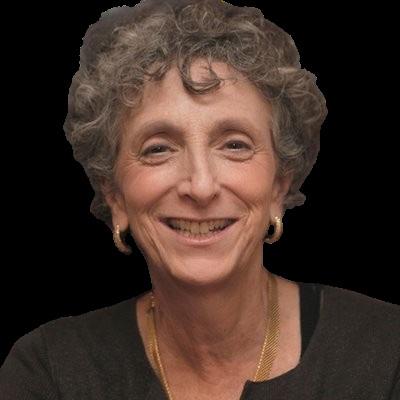
This year, South students have the opportunity to submit their writing to the Yale Essay Competition. Applicants must choose a country, identify a global or domestic issue it faces and write an essay developing a foreign policy approach that addresses the problem. Te winner will be featured in a Yale publication and win $300. Te deadline for submissions is April 14.
The second annual Career Pathways Event was held at South on March 27. The event provided students with an opportunity to explore the possible paths they can take after high school beyond attending college. Representatives from a variety of professions were invited to speak to students about their occupation.
South’s Faculty Variety Show was held on March 23. The annual show allows teachers and other members of South’s staf to showcase their unique talents, and this year’s was hosted by English teacher Matthew Wilson and history teacher Lillian Robinson. All proceeds from the show went towards South’s Students-in-Need Fund.
Class ofcers from each grade have begun planning their annual end-of-year dances. Te Freshman Dance will be held on May 4, centered around the theme of A Night Under the Stars. T e Sophomore Dance is casino night-themed and was held on April 6. T e Junior Semi-Formal will be held at the Boston Marriott Newton Hotel on May 11, and the theme is Roaring ‘20s. The Senior Prom will be held at the Fairmont Copley Plaza on June 4.
Submissions for South’s frst art competition opened on March 19, inviting all students to submit their 2D, 3D or photography pieces to be displayed and judged by South’s art teachers. Te fnalists of each category will receive cash prizes, and the proceeds earned from the submission fees will be donated to local schools in need of art supplies. Submissions close on April 12.
Plastic packaging restrictions and new compost locations are established in Newton to help create a further sustainable community
By Seyoon Byun, Maya Hayao & Izzy MonaghanIn September 2023, the Newton City ess at Jin’s Fine Asian Cuisine Kimmie Chan Sophomore and president of South’s “Te benefts of paying a little bit more



In March, the Newton Police Department (NPD) organized the “Serving in the 21st Century — Taking Action” community workshop campaign in collaboration with the national nonproft Dedication To Community (D2C). Te 18 workshops strived to cultivate trust, transparency and mutual understanding between law enforcement and the community they serve.
D2C educates individuals and organizations on skills to prevent confict and build connections. Te non-proft has already hosted workshops in 26 states and aims to reach all 50.
Former NPD police captain William Spaulding initiated the Taking Action campaign with D2C after 25 years of service. Since his passing in November 2023, current ofcers have worked to uphold his vision for the events.
NPD Ofcer Mike Gaudet said that Spaulding made a remarkable contribution to their community.
“Captain Spaulding has always been a person of the community trying to foster better relationships,” he said. “It’s important to honor [his] legacy, and everyone has come with an open mind.”
Te events consisted of presentations and speeches by the NPD, as well as feedback from the audience.
Alison Player, a Newton resident and event attendee, said that the program provided a safe environment for transparency and con-
siderate conversations.
“Tere aren’t enough opportunities to talk to the community and have moments of understanding,” she said. “It makes me hopeful that we can make progress.”
Sophomore Quinn Adams said that direct communication with the police promotes mutual trust.
“Tese workshops reveal how hard [offcers] work, and create a better understanding between residents of Newton and the police,” she said.
Likewise, City Councilor Andreae Downs said that these workshops give residents
a chance to see the difculties of being a city employee.
“It’s good to have a better idea of the challenges people who work for the city face,” she said.
Quentin Williams, the CEO and founder of D2C, said that educating conversations foster accepting communities.
“We believe that education is the key to changing society for the better, and builds empathy and compassion through meaningful relationships,” he said.
Williams also said that diverse perspectives help stimulate growth in the community.
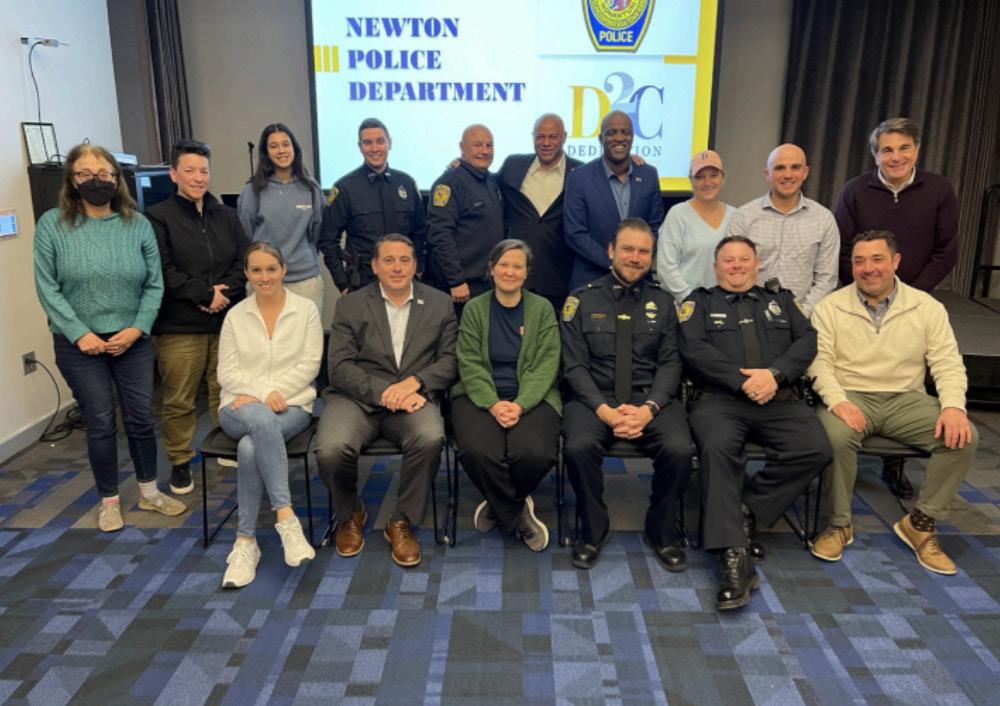



We believe that education is the key to changing society for the better, and builds empathy and compassion through meaningful relationships.
Williams CEO and Founder of D2C
“We don't need to be in a sterile environment,” he said.“We need to be in a collaborative environment.”
Since the campaign, Lieutenant Sean Healy said that events fostered new connections.
“I’ve seen citizens have open and honest conversations,” he said. “Tere have been great relationships built in this training.”
Healy said that he hopes for more frequent interactions between the NPD and Newton residents.
“We can build of of this feedback that we've gotten from community members,” he said. “We've gotten great ideas on things that we'd like to do in the future.”
Williams said that he encourages residents to take action in their communities.
“Show up, [and] be a part of the solution,” he said. “Participate and give your perspective on how to be better.”



During the week of March 18, the program Courageous Conversations on Race (CCoR) was held in sophomore chemistry classes and led by upperclassmen students. Te program spanned two class periods and included discussions on microaggressions as well as personal experiences with racism.
CCoR was developed in 2014 to foster meaningful conversations around race in the classroom. While the program stemmed from good intentions, a lack of participation during these conversations is apparent, raising the question of how efective CCoR truly is.
Although some may fnd it uncomfortable to engage in discussions around these sensitive issues, CCoR’s message is inefective if students are unwilling to take part in the activities; therefore, it is crucial to fnd ways to improve participation during these conversations.
Tese conversations would be more meaningful if held in a more intimate setting: rather than holding the program within class blocks, a closer-knit environment such as advisory, where a smaller group of the same students meet over the course of four years, would encourage far more substantial discussions with expanded student participation.
Te same efect could also be achieved if an element of anonymity is incorporated. For those who don’t want to be associated with their response to any given question, an
anonymous response or question box would stimulate their comfort with the discussion topics and ultimately improve participation.
In addition, giving students time to prepare in advance for demanding conversations would in turn help improve the quality of said conversations.
While CCoR facilitators have used candy to incentivize students to chime in, it is still a challenge to encourage active participation in conversations when the often extremely personal questions asked put students on the spot.
Before holding CCoR sessions, students should be given notice of deeper, more complex and potentially uncomfortable topics so they have time to think about a meaningful contribution they could ofer.
With CCoR spanning two 75-minute class periods, the discussions feel forced and repetitive by the sessions’ end.
As opposed to holding these conversations solely two days out of the entire 180-day school year, it would be more efective to hold them more frequently for shorter periods to keep students more engaged in the discussion.
Providing more breaks during the sessions is also essential, as exploring profound and challenging topics for extended periods can be emotionally draining not only for students but also for facilitators.
Students experience Courageous Conversations on Identity (CCoI) in freshman year,
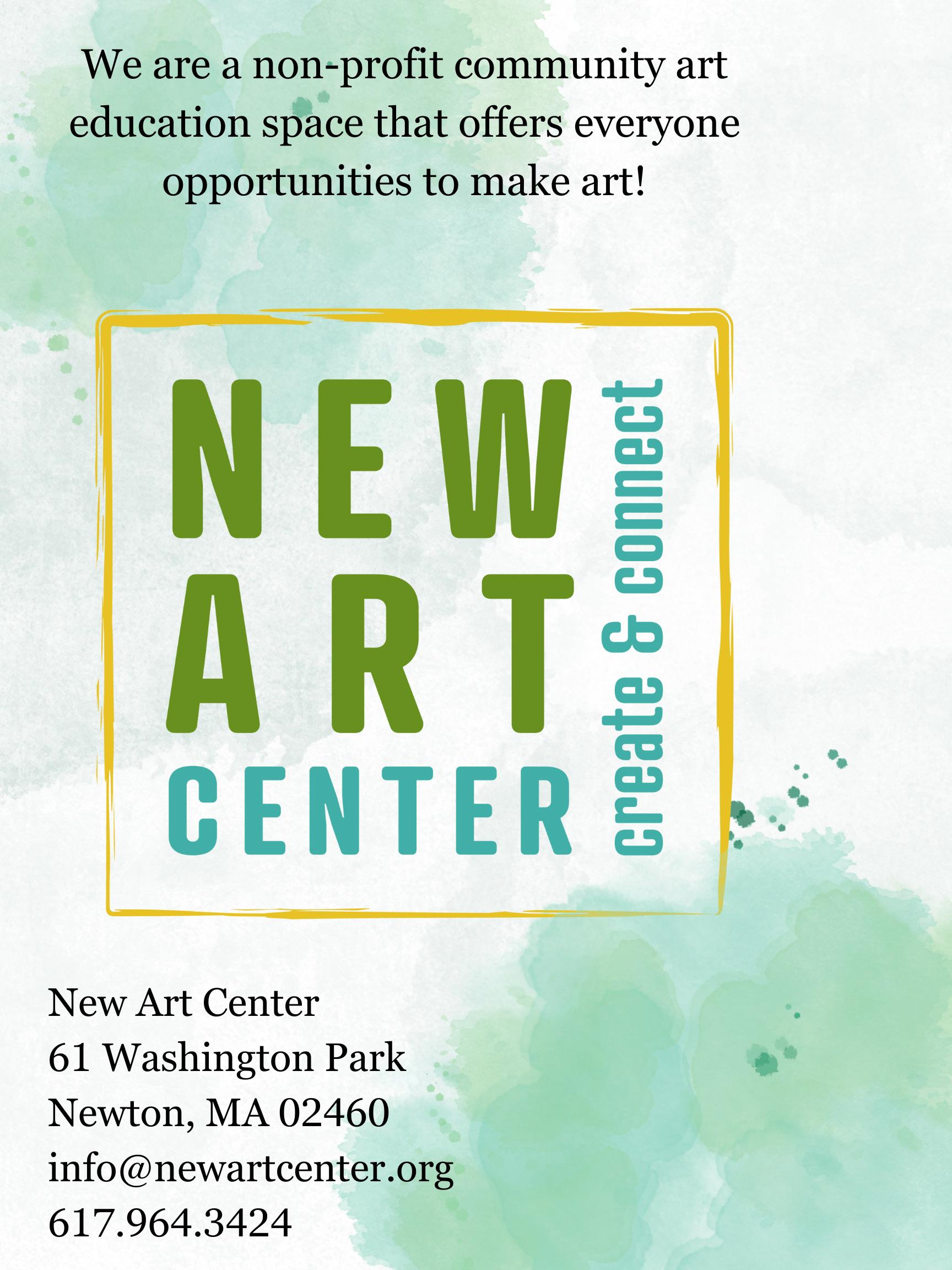
and while the program is a helpful precursor to CCoR, our Editorial Board has found the major takeaways from the two programs to be similar, resulting in CCoR feeling redundant.
A large part of the program was aimed at understanding the statistical data behind racism in our community.
While it provided a good foundation for discussion, we feel we learned the most from our courageous classmates who were willing to share their own experiences actually facing racism in their own lives.
Hearing our classmates' experiences lets us visualize just how relevant the topic is for students at South.
Setting the precedent of facilitators sharing their own experiences with facing racism would add even more depth to these discussions, help break the ice and result in more students feeling comfortable speaking.
Although improvements to the current structure and content of CCoR must be made, incorporating discussions around race into South’s core curriculum is vital for normalizing these conversations in our school environment.
While we commend the eforts by students and teachers to develop a student body of allies, not bystanders, South must take the critical steps to transform these courageous conversations into truly powerful ones.
Editorial Policy
Te Lion’s Roar, founded in 1984, is the student newspaper of Newton South High School, acting as a public forum for student views and attitudes.
Te Lion’s Roar’s right to freedom of expression is protected by the Massachusetts Student Free Expression Law (Mass. Gen. Laws Ann. ch. 71, Section 82). All content decisions are made by student editors, and the content of Te Lion’s Roar in no way refects the ofcial policy of Newton South, its faculty, or its administration.
Editorials are the ofcial opinion of Te Lion’s Roar, while opinions and letters are the personal viewpoints of the writers and do not necessarily refect the opinion of Te Lion’s Roar Te Lion’s Roar reserves the right to edit all submitted content, to reject advertising copy for resubmission of new copy that is deemed acceptable by student editors, and to make decisions regarding the submission of letters to the editors, which are welcomed.
Te Lion’s Roar is printed by Seacoast Newspapers and published every four weeks by Newton South
Jenny
Ellie
Alex
Laura
Sarah
Bethesda
Ava
Jacob
Angela
Grace
Charlie
Joey
Olivia
Lynn


Grace Dempsey & Risha Sinha Editors-in-Chief from the
Grace's Playlist

If Not For You
Currently on loop
George Harrison
Vintage throwback

Michelle The Beatles

Something
Blasting in the car










The Beatles
Singing in the shower
Gypsy
Fleetwood Mac
Just Like Heaven
The Cure Dreams
Dancing
Dreaming up rom-coms
The Cranberries North Clairo
Waiting Room
Phoebe Bridgers
Getting ready
George Harrison studied sitar in India, and my mom played sitar, so basically I’m one degree of separation away from the greatest Beatle.
Grace is currently in Paris, which contextualizes the French in this song. Tis is my favorite song on the playlist.
Hey, I think Grace likes the Beatles?! I’ve heard this song every time Grace has driven me in Greta (the grace-mobile), and it never gets old.
Listening to this song in the shower is the equivalent of using vintage 4-in-1 Old Spice body wash.
Ooh, this is swanky... I like it! I can see Grace dancing to this like Mia dances to "Take on Me" in La La Land
Te "Derry Girls" song! Forget what I said before, THIS is my favorite song on the playlist.
Tis sounds like a movie ending: driving away in a vintage car on an empty road — how I imagine Grace spends her summers.

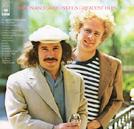
Risha's Playlist
Currently on loop
Gimme What I Want
Miley Cyrus
Vintage throwback
Scarborough Fair/Canticle
Simon & Garfunkel
Blasting in the car

Young Dumb & Broke
Khalid

Waterloo ABBA
Singing in the shower



Mía
Bad Bunny & Drake
Ophelia
Dancing
Dreaming up rom-coms
The Lumineers
Houdini
Dua Lipa
Sobbing
Made for film
I Could Write a Book For You
Harry Connick Jr.
Oh! Sweet Nuthin'
The Velvet Underground
Fake Plastic Trees
Radiohead
Kiss Me
Cooking
Bombing a test
Karaoke
Sixpence None the Richer
Guilty pleasure
Paparazzi
Lady Gaga
Tis song is just under 7 minutes long, of which I bawled through 4. Who hurt you, Grace?
"When Harry Met Sally" is the greatest romcom. I will hear no arguments.
Tis song is over 7 minutes long. It was indeed sweet, but its impact on me? Nuthin’. Grade-A Snoozefest.
Tis sounds so defeated... Poor Grace <3
Tis is one of the few songs here that wouldn't also be found on the playlist of a middle-aged white man with long hair and fip-fops.
Where is the guilt? Tis song only brings me pleasure.
Risha, every song on your playlist reflects a different, wonderful facet of your Rishaness. Music should be fun! I forget that most of the time. Your playlist’s themes of confidence and joy shine through so clearly in you. You light up room 1201 every day, just like you light up the lives of everyone around you!






Strange
Celeste
A person's taste in music speaks volumes of who they are. Instead of a traditional piece, this issue, we made playlists! issuu.com/thelionsroar
Hours:


While you may be clicking “repeat”, I’m hitting “hide song.” I love Miley as much as the next person, but this one’s a miss.
I immediately recognized the album cover from the beginning of the movie "Almost Famous" – “Simon and Garfunkel is poetry!”
Tis is so summer '19, VSCO girls and metal straws. Risha, next time you drive me anywhere, blast this song, and I’ll roll down the windows!
Blasting any ABBA song in the shower is defnitely the strat.
I can imagine Risha living her best life and tearing up the club dance foor to this chorus.
I imagine Ophelia spending all of her days frolicking through meadows — Risha would totally do the same.
Getting ready
Sobbing
Made for film
Audition (Fools Who Dream)
La La Land Soundtrack
Home
Edith Whiskers
WWIII
Cooking
Bombing a test
Machine Gun Kelly
Lovin' On Me
Jack Harlow
Karaoke
Guilty pleasure
Talk Dirty (ft. 2 Chainz)
Jason Derulo
My dad listens to Dua Lipa.
Tis is sitting in your room, staring out the window in silence type of crying – Risha, I’m concerned for your wellbeing.
I cannot listen to anything from the La La Land Soundtrack – I sobbed violently when I watched it for the frst time, and I still haven’t recovered.
Next time I am stress baking at 9pm on a Wednesday night (a more common occurrence than you’d think), I’ll remember this one.
Tis is the day the music died. If I had to listen to this song every time I bombed a math test, it would be my biggest motivator to never do poorly ever again.
If we ever do Roar karaoke night, I am now banning you from the mic.
Tis song makes me want to end my Spotify subscription, burn all of my records, throw out all of my CDs and rip out my eardrums.
Grace, listening to this playlist has aged me by at least a couple decades. But while I listened (and sprouted grey hairs), I felt a sense of calm that I only feel around you. Your serenity and refined taste balance me out, and I thank the gods (boygenius) everyday that I get to work with you.

If you’re anything like me, you’ve had your fair share of style changes over the years.
Before writing this article, whenever someone mentioned maximalism, I immediately thought of the bold and sometimes erratic fashion choices I made in middle school.
After a few years of being teased by middle school peers for my outfts, I concluded that a “cleaner” look simply suited me better.
Wearing nondescript clothes made me feel capable of connecting with a broader group of people, but as I reminisced on my many experimental outfts, I remembered how freeing it felt to express myself without fear of judgment.
So, when presented with the opportunity to revisit maximalism for a week, I decided to take it. I ultimately found that maximalism isn't just extravagance without reason; instead, the lifestyle emphasizes individualism and confdence.
I began by brainstorming a plethora of maximalist transformation ideas.
For example, I was keen on dying my hair (again), redecorating my room, going on a shopping spree or embrac ing an entirely new persona. But the more I researched maximalism, the more uncertain I became.
Unfortunately, things like fur coats and many, many layers of clothing were out of my comfort zone, I had no money for shop ping, and I didn’t want to fry my hair of like I’d done too many times in the past.
Eventually, I concluded I would ease into maximalism: start ing with small fashion changes and ending the week fully reunited with fun colors and patterns.
Accordingly, I began sorting through my closet, picking out all the eccentric clothes I had always wanted to wear but had been too afraid to do so.
again; I had just started to feel confdent without being completely put together, and I didn’t want that to change.
At the beginning of each day, having donned a new outft, I felt vulnerable. I constantly asked my friends if they were absolutely positive I looked okay. Rather than improving, my confdence worsened.
However, as I grew more comfortable, I no longer walked the halls subconsciously wondering how people perceived me. I felt secure.
Before embracing maximalism,
DBy Emily Wangoes it spark joy?” I’m sure you’ve heard that signature catchphrase from the queen of minimalism, Marie Kondo. But the world of said lifestyle goes much deeper, so tag along on my week of exploring this lifestyle in depth.
A minimalist lifestyle is intentionally living with fewer possessions — focusing only on the ones you need. Ideally, this simplicity eliminates noise and allows you to focus on what is truly important. After diving head-frst into the
insignifcant they seemed. Whether that was tossing my once-abandoned basket of laundry into the wash or fnally understanding elusive chemistry concepts, I rejoiced at everything. Additionally, I resisted my typical im-

Maximalism makes living joyful. Living like a maximalist reinstilled my love for self-expression and trying new things.
During the peak of my previous maximalist era, I went all out with my appearance because when I didn’t meticulously plan my outfts, my self-esteem plummeted. Tis was part of why I went through such a drastic stylistic change — exceeding low standards felt better failing to meet high ones.
Going into my maximalist week, I feared a similar shift in self-esteem would happen
formed my clothes into an extension of myself, as opposed to just a meaningless shirt and jeans.
Although I didn’t excessively revamp my wardrobe or lifestyle, making changes to the way I thought about fashion and the items I owned elicited positive results.
Now, when I think of maximalism, I know it’s not about cramming an inordinate amount of color or accessories into one outft.
Instead, it’s about dedicating time to personalizing your way of life.
Just like art, writing and other forms of self-expression, maximalism makes living joyful.
Living like a maximalist reinstilled my love for self-expression and trying new things.
the same B-rolls of cofee machines and blinding white walls — I found myself skeptical of the concept.
Could minimalism actually resolve my bad dating experiences or my grades’ downward trajectory? To fnd out, I focused on specifc goals and strategies for my experiment rather than forgoing all my worldly possessions.
One key point of minimalism that came up repeatedly was expressing gratitude and contentment over greed. During my week, I paid special attention to life’s smaller details, such as fnding beauty in the sunny weather and the peaceful drive home from piano class.
Instead of exclusively acknowledging major milestones and achievements, I made sure to celebrate smaller victories, no matter how
lifestyles might not be practical, minimalism’s core
While hyper-minimalist lifestyles might not be practical, minimalism’s core values can be applied to everyday life.
pulse purchases. Troughout my minimalist week, I found myself questioning whether or not an item was actually worth purchasing — do I really need another white tank top when I already own one? Te answer was a resounding no.
Of course, I couldn’t follow minimalism without decluttering. To the relief of my family, I selected my horribly chaotic bathroom. Te process was long and treacherous, but I soldiered on to the tune of Taylor Swift’s “Clean.”
After what seemed like hours, my bathroom no longer looked like a hurricane had swept through it. Now, when I get ready in the morning, I no longer feel the rush of anxiety caused by my once disorderly room.
To embrace the minimalist lifestyle, I committed to a social media detox. With my daily screen time of 8.5 hours, I knew I had to limit myself to only 30 minutes on TikTok and 20 minutes on
Without the constant overstimulation, my mental health improved moderately. I stopped checking my phone constantly. Without the distraction of social media, I was able to be more productive and present in situations.
After a week of practicing minimalism, I discovered many positive habits I’d like to continue. Minimalism has helped me reassess my priorities regarding material goods and relationships.
But the minimalist lifestyle only works in moderation. Methods like Project 333 (keeping your closet below 33 items) and Swedish Death Cleaning (getting rid of all non-essential items) are extraordinarily restricting and unrealistic.
While the hyper-minimalist lifestyle infuencers promote might not be practical, a lot of minimalism’s core values can be applied to everyday life. You can fnd calm in focusing on what actually makes you happy instead of temporary gratifcation.
So, next time you’re feeling overwhelmed, call upon the spirit of Marie Kondo!
Fake people are spewing fake news, humans are strapping screens to their faces at concerts and a robot takeover seems more imminent by the day. Deepfakes, artifcially generated photos and videos that appear life like, and virtual reality (VR), interactive threedimensional digital environments, blur the line between real life and the synthetic world of tech.
The misuse of artificial intelligence (AI) has reached such egregious degrees that its relentless development does more harm than good.
Depicting everything from political pro paganda to pornography, AI deepfakes now run rampant on the internet. Te sophistication of this technology makes it increasingly di to diferentiate a deepfaked video from a real one and to make matters even worse, social media platforms have done almost nothing to regulate this content.
Te technology behind such videos can be easily harnessed to spread misinformation, for the realistic qualities of artifcially generated content lead viewers to place unquestioning faith in its legitimacy. As the popularity of deepfakes increases, inevitably, so will the prevalence of the misinformation it propagates.
Chinese news site Wolf News’ manipu lation of AI to spread propaganda promoting the Chinese Communist Party’s agenda is one example of the dangerous consequences of unregulated deepfake tech.
Although a closer look at Wolf News’ deepfakes shows warped hands and uncannily blurred skin, most viewers just accept the news
as the truth without bothering to scrutinize it.
Tis absence of critical thinking makes a site like Wolf News so threatening: technology is catastrophically evolving faster than our

fake technology

to steal the likenesses of female celebrities, most notably Taylor Swift. Not only is such malpractice detrimental to victims’ reputations, but creating and posting videos of a sexual nature — real or fake — without someone’s consent is a reprehensible invasion ofnographic deepfakes are —ited to depicting famousnology’s rapid growth and lack of regulation, it seems inevitable thatcluding minors, could The ability to create pornographic material for almostity to take away someone else’s agency of their own image, iser for any one person to hold.
When I was 11 years old, I wore T-shirts emblazoned with horses, bright, patterned leggings and light-up sneakers I’d begged my mother to buy.
Now, 11-year-olds are sporting entire outfts from Lululemon, wearing bracelets that cost more than it did to furnish my whole bedroom and practicing complex skincare and makeup routines.
Tis epidemic of trendy pre-teens started during the COVID-19 pandemic, when the middle-schoolers in question were only in elementary school.
Society was put in a position it never was in before, one where all social interactions were forced online.
In all the confusion, kids ended up going on social media at increasingly younger ages — and that is where the problem starts.
Tese decade-old kids are at the prime of impressionability, meaning the improperly regulated internet is able to wreak havoc in fuencing them.
According to a study by Statista in 2022, 68 percent of children aged 11 to 12 were on social media, meaning many were absorbing the dangerous content on such platforms.
Te large volume of unsafe trends and unhealthy standards promoted on social media makes such exposure especially harmful. Haul and “Get Ready With Me (GRWM)” videos are the ultimate issue right now since, I’ll be honest, they’re utterly addictive.
quantities of purchases one infuencer makes are enough to incite jealousy, and with pre-teens’ impressionability, they are inclined to join in.
Additionally, the extensive skincare routines popularized by “GRWM” videos are sim-
videos that normalize these unreasonable routines, they may be gaining customers, but at what dire cost? Te physical and even mental damage of children.

Te problem with haul videos is that they teach kids consumerism. Te copious
(no matter to whom) generate revenue, plain and simple. By targeting tweens with ads and
Social media under the skincare curse also teaches children to over-consume products at an alarming rate.
Given that this habit begins at such a young and impressionable age, the issue of overconsumerism will only persist into adulthood.
We are watching a generation of youth obsess over materialistic ob-
e pre-teens in question spend hundreds of dollars and their mental x” already per-
Nearly every week there is a new trend, with a new beauty ideal to meet, and
e subsequent problem this poses for our planet is terrifying. Capitalism ingrains consumerism within us all: materialism and overconsumption are already notable issues,
Deepfakes aren’t the only fearsome technology rapidly advancing — VR is rapidly becoming a popular form of seemingly innocent entertainment. With games from Star Wars to Beat Saber enhancing the power of VR, individuals can explore a world of endless possibilities.
But as with most technology, VR’s drawbacks heavily outweigh its entertainment value. Consistent use of virtual reality is detrimental to our health, a fact often neglected by commercials lauding VR’s captivating qualities.
According to a study conducted by Iowa State University, up to 80 percent of VR users experience “cybersickness”, a term coined by scientists to describe VR’s negative health efects. Symptoms include disorientation, dizziness, nausea, eye strain, hearing defciencies and muscle fatigue.
Te deeper implications of these adverse health efects are that increasing numbers of VR users risk their physical health in favor of the lives they’ve built online. Users have already lost countless sentimental memories to their technology; adding more devices incentivizes younger generations to normalize living life behind a screen. Choosing to wear VR headsets in public shows a preference for virtual interaction, losing the interpersonality of human nature.
Tese issues will only worsen as this technology becomes more accessible. As deepfakes and virtual reality continue to advance, our laws and regulations need to advance alongside them.

with landflls topped to the brim and fast fashion companies using sweatshops to meet demand.
With our youngest generation only adding to these global catastrophes, these problems can only worsen, even as climate activism increases.
Te solution is simple. Social media companies are to blame for the whole problem, as it is extremely easy to create an account regardless of supposed age restrictions.
Te combination of kids and dangerous ideals could only lead to disaster; children will grow up materialistic and physically harmed by intensive skincare products.
Once these kids become adults, what will happen to society should they not learn?
Tere needs to be thorough procedures and qualifcations to make sure kids cannot go on these platforms.
I don’t want to sound like a stereotypical grandparent who starts every story with “back in the good ol’ days,” but when I was 11 years old, I spent my days building forts out of sticks in the woods by my house.
Hours and hours would pass just by playing with my friends, making up stories and going on adventures. Tose really were good ol’ days when I could run around without a care in the world.
Kids today don’t have those experiences, and we need to do something about it — or we are going to see the creation of a generation so entirely infuenced by social media that humanity goes past the point of no return.
“You want to take more than one elective? Well, you need a free block during one more quarter available to have room in your schedule for it. Can I move that one pesky quarter class? No, it’s required …”
Tat’s a conversation every rising junior and senior picking their courses for next year has had with their counselor. Can you guess the stubborn, immobile class? Hint: it starts with “W” and ends with “ellness.”
Te Commonwealth of Massachusetts requires that every student take a physical education course for each year of their K-12 education. Sounds great, right? A bunch of healthy, happy students giggling and kicking their feet while running or climbing a rope.
Well, I’m not here to dispute the merits of that; rather, I’m here to dispute the way South has decided to go about fulflling the wellness requirement by requiring it one quarter per year.
Te biggest problem with South’s system is that it prevents students from taking more than one full-year elective unless they drop one of their core classes. Instead, they’re typically left with three quarters free — after scheduling that one full-year elective — which most people f with a meaningless semester and quarter-long classes for the sake of credits.
Or maybe they have to choose between two classes they want to take: classes that refect their interests or classes that can help them stand out when applying to college. While this dilemma might not exist for
students who are in the frst year or two of their chosen electives and thus have the fex
One Mentoring elective, students can attend the weekly meetings during WIN blocks, as many people don’t want to drop all their electives for

ment, nor can you go after school.

South has a variety of other, less restrictive options for taking electives. For the One-to-
pretty ridiculous that they cannot be used as one in this specifc case. Likewise, you cannot go before school to meet the wellness require-
Nowadays, the focus on health and wellness has taken center stage in various aspects of our lives, including our food choices.
Tis year, you may have noticed the Student Center’s new vending machines, which have replaced mostly conventional snacks with — supposedly — healthier alternatives. Tese new snacks promise not only higher nutrition, but also a higher price tag.
For hungry high schoolers, vending machine snacks are always popular, even with branding reminiscent of diet culture, so we’ve selected a few items from the new, healthy vending machines to review to see if they live up to their price tag.
Starting with a classic snack, Gold crackers ofer a salty favor and crunchiness enjoyed and savored by many. Despite being made with whole grains, they still have a strong cheddar cheese favor — ideal for any cheese lover out there.
Goldf sh are an undeniably popular choice among students, but their saltiness prevents them from being a personal favorite. Nonetheless, they’re great to eat if you happen to have a water bottle nearby!
Next up, we have pistachios, a nutritious and tasty option. Teir nuttiness, paired with a distinctly salty favor, makes them both a satisfying snack and a good source of protein, unsaturated fatty acids and potassium.
If Goldfsh isn’t your cup of tea due to its cheesiness, but you still crave something crunchy and savory, pistachios are a fantastic alternative. Additionally, they aren’t extremely
salty, and they’re quite flling.
Moving on to another popular choice: Smartfood White Cheddar Popcorn. It has the right balance of cheesy favor and saltiness, which makes it the best popcorn out there. Although it doesn’t provide the same satisfying crunch as the other options, the fantastic cheesiness makes up for that absence.
Additionally, with its 2.5 grams of total fat and lack of saturated fat (unlike the original), this popcorn seems like a healthier option.
Since this issue mostly impacts juniors and seniors, who often have their license as well as a car, it limits the otherwise found freedom. South also doesn’t allow you to play a sport to make up the credits, though a sport can impede your performance in a wellness class from overexertion, sore muscles and overall exhaustion.
Any health benefts are marginal at best when you take into account the stress wellness can cause. Electives are meant to be enjoyed and relieve stress. I know, for me, pottery is super relaxing after a long day of schoolwork, and the same applies to other classes.
Te graded format of these classes just creates an additional opportunity for students to have to worry about their GPA. Finally, if a student does pick the free block during three quarters, they run the risk of getting used to it.
Tis leads to an interrupted schedule, leading to worse time management. For a class that preaches (and supposedly teaches) the harms of unmanaged stress, wellness should not be creating this much.
A good idea can easily sour if not executed properly, and South defnitely dropped the ball on this one.

creasing overall fat consumption, subsequently lowering cholesterol concentration.
Te vending machines also feature Nature Valley's Granola Bars. Tese are a good option for those who enjoy crunchy snacks but want something with a touch of sweetness. Made of oats and dipped in honey, these bars strike a balance between crunchiness and sweetness, containing 22 grams of whole grains, providing fber, vitamins and essential nutrients.
Te vending machine also boasts a clas-


the same as the beloved, yellow-packaged junk food. Instead of being fried, they’re baked and have 65% less fat.
However, the presumed health benefts derived from lower fat content and lower cholesterol are mitigated by the lack of favor. Teir only standout is their crunchiness and convenience.
Lastly, we have Apple and Eve’s apple juice — a refreshing beverage perfect for anyone looking for a drink that isn’t sparkling water. With its natural sweetness and refreshing taste, apple juice is a quick and minimally processed choice for anyone looking for a drink with lots of favor.





Regardless of these snacks’ subjective tastiness, the colorful new vending machines’ presence raises a question: why?
While we enjoyed many of these snacks and found some marginally healthier than other alternatives, they did not have a signifcant health diference, suggesting that the “healthy vending” branding is primarily for show.
Furthermore, while child obesity in the United States is an ongoing epidemic, it’s not a particularly prevalent issue among Massachusetts youth.
So why was there a need to install newly renovated vending machines ofering more expensive snacks branded as healthy?
Whether or not these snacks are actually more nutritious, it certainly seems as if a distributor simply jumped at the opportunity to upsell to students in a fnancially privileged community.
graphic by AJ NguyenAs the 2024 presidential election looms closer, voters are becoming increasingly concerned about our elected ofcials’ ages.
At 81 years old, if current President Joe Biden is reelected, he will continue to be the oldest sitting president in the history of the U.S.
Meanwhile, if the Republican presidential nominee, Donald Trump, is elected into ofce at the age of 78, he will match Biden's record as the oldest president in American history, set in 2021.
Voters and Congress alike, have both discussed the ages of our 2024 presidential candidates. Te natural decline of physical abilities as we age is inevitable. However, setting an age limit for elected ofcials is a deliberate process that is complex and timeconsuming, as it requires a constitutional amendment.
Ultimately, choosing a cutof age for elected ofcials would be completely arbitrary: it is impossible to determine every person’s competence based on their age alone.
Indeed, there is no single age when
people lose cognitive and physical function so it is unsuitable to make generalizations about a given age group.
It is also important to consider what makes an efective leader. All components of efective leadership fall under problem-solving and inductive reasoning. Both of these skills further develop as people age. Tus, older candidates have the potential to be superior in these skills compared to their younger rivals.
Cognitive and physical function do not interfere with someone’s competence to represent an issue. Candidates are elected with the purpose of representing an issue, and if they can properly represent their cause then age is not interfering with their ability to govern.
Candidates should be elected based on their ability to represent the ideals of the citizens who are voting for them, they should not be elected for their age. Any given candidate has the ability to govern, guided by diferent values, regardless of their age.
Likewise, votes should be going toward candidates that are a good ft for the role. For that reason, preventing people from running for ofce due to their age is essentially counter-
By Isabella Folchproductive. Filtering the ages of candidates is unnecessary when the voting process already takes care of it automatically.
Tere is also the critical question of how these age restrictions would exactly be implemented. Imposing an age limit would require a constitutional amendment. Constitutional amendments are incredibly difcult to pass, especially because there are only two ways to go about it.
The first is through Congress, where both the Senate and the House of Representatives must pass the bill with a two-thirds vote.
Te other method is to have twothirds of state legislatures request a national convention for proposing the bill. Both of these are exceptionally difcult to accomplish and consequently counterproductive.
If constituents are so concerned about ofcials’ ages, voters should simply choose another candidate. If an elderly candidate doesn’t get votes, they won’t get elected.
Tis strategy avoids the inconvenience of a constitutional amendment and gives power to the voters.

Right now, our country needlessly shuns teens from voting. Before you’re 18, it is often argued that you’re incompetent and immature; however, the second you turn 18, you’re expected to know everything and be able to make informed decisions, oftentimes without guidance.
Tis is an unproductive mindset that neither encourages voting nor helps young voters make informed decisions. Moreover, delaying voting until adulthood has major consequences for voter turnout and denies teens a say in creating laws that impact them.
Starting voting young is critical to increasing civic engagement. A study from Pace University found that voting is a habitual act, so it is best to begin early. With voter turnout at an all-time low, it is imperative that we allow the younger generations voting rights to regain American democracy.
Most importantly, the laws and regulations being passed by government leaders afect youth who can’t vote. Since these policies directly afect them, students need to be brought to the decision-making table.
Many 16-year-olds work jobs and pay
taxes, but older teens get no say in the laws and regulations that directly afect them. Kids and teens are the future. We deserve a say in the laws governing and impacting us long-term.
Despite the inherent impact of these regulations on our lives, there is still opposition towards lowering the voting age. Most commonly, it comes from a fear that kids are not educated enough to make informed decisions about voting.
However, in direct contrast, a study from Tufts University in 2015 found there to be no signifcant diference between the civic knowledge of 16-year-olds and 21-year-olds.
Te same study stated that in countries where the voting age was lowered, a trickle up efect occurred: as kids became involved in the issue, they spoke about civic issues more often with their families, helping the adults of the house become better informed as well.
Now, more than ever, it is our time to act. Te policies and laws of the government afect the future of the world we will inherit, yet we have no say. Already, we see politicians deprioritizing prominent issues, simply because they did not grow up in a world where it was



 By Sofa Telio
By Sofa Telio
a priority.
Unless we act soon, instead of inheriting a prosperous nation, we will be scrambling to pick up the pieces of the mess we’re left with.
At 81 years old, if current President Joe Biden is reelected, he will continue to be the oldest sitting president in the history of the U.S.
Meanwhile, if the Republican presidential nominee, Donald Trump, is elected into ofce at the age of 78, he will match Biden's record as the oldest president in American history, set in 2021.
Voters and Congress alike, have both discussed the ages of our 2024 presidential candidates. Te natural decline of physical abilities as we age is inevitable. However, setting an age limit for elected ofcials is a deliberate process that is complex and timeconsuming, as it requires a constitutional amendment.
Ultimately, choosing a cutof age for elected ofcials would be completely arbitrary: it is impossible to determine every person’s competence based on their age alone.



Writing emails is hard. Writing emails to your teachers is even harder. .
In this short guide, I will make you an expert, with my foolproof email method: T.G.A.Q.D.C. (Tone, Greeting, Address, Question, Distraction, Closer). So sit back, grab your laptop and follow along.
Before we start, I must note that over the course of this email you will most likely burn 60 to 80 calories from typing alone. To put that into perspective, those calories are roughly the equivalent of a single Welch’s fruit snack.
Now, before you actually start writing your email, you should take a second to ask yourself a very difcult question that you must face bravely: does my teacher actually like me? Your answer will determine the tone of your email.
Let's be honest, teachers don’t like their students, and you're probably not one of the few exceptions, so you should try your best to be as polite as possible. When choosing the greeting to start your email, you can either keep it simple with a “dear”, “good morning” or“hello,” but it’s better to keep them on their toes with “allow me to introduce myself” or “what's going on”.
You now have a couple of options of how to address the email to your teacher. If you don’t know your teacher well, you should be very informal with them as a means of getting to know them better.
You should call them by their frst name or even better, their nickname. If they don’t have a nickname, now is a great time to make one for them!
Next, you must express why you are writing to your teacher. Tis question is the meat of your email. You’re probably asking for an extension on an assignment that was due two months ago, or because you forgot what was assigned for homework, but it could also be that you’re just checking in and wondering how their day went.
(If it’s the latter, I bet you’re currently sitting in between a B+ and A- in their class, and you’re trying to get them to round up).
If you asked about the homework, your teacher might be angry. If you asked how their day was, they are defnitely angry, so you must now redirect their thinking away from your stupid but necessary question.
Some of my favorite distraction phrases are "Remember that one time when … (fll in with a fond memory of something that happened in your class)”, or “Go Celtics!” or “Te weather has been really unpredictable, huh?”
Finally, cap of your email with a sign of and your name. A couple of good ones are “sincerely”, “thanks” or “love”.
I have been following this email strategy for years, and I can confdently say that it has around a 95% success rate. Follow it word-for-word, and the same success will fnd you as well.




n Feb. 5, Dartmouth College announced it would reinstate standardized testing requirements starting with the class of 2029, undoing the test-optional precedent established during a domino ect, and some of the nation’s most selective schools followed suit, triggering mass hysteria over the re-established presence of the SAT and ACT in the admissions process.
However, the re-introduction of standardized testing in the admissions process is not the norm. According to a study conducted by the education policy organization FairTest, over 80% of U.S. four-year colleges and universities will remain test-optional for fall
ese changes to college admissions policy, in tandem with movements to change the Massachusetts Comprehensive Assessment System (MCAS), highlight the necessity for adaptability in education to achieve a more
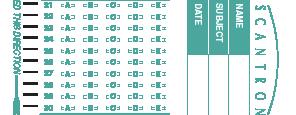
Sufolk University will remain part of the majority and continue the test-optional policies that they instituted even before the pandemic.
However, South math teacher and SAT preparation course instructor Lijia Li said that these tests only partially depict students during the application process.
“Tis standardized test tries to provide a way that is not subjective to measure students. But it's only academic. Tey cannot speak for students' personalities and all other activities,” she said. “Tis is only one part of yourself. It’s like if you drew a picture of yourself for college, this is only a tiny piece of the painting.”
Many South students utilize resources such as private college counselors to prepare for standardized tests like the SAT and the ACT. For many South students, the test-optional environment provides fexibility in the application process.
Junior Yonatan Tevet-Markelevich said he switched back and forth between the SAT and ACT because he felt pressure to maximize his scores.
By Irene González de las CasasMoore said that this strategy exposes the hypocrisy of the test-optional system and thus leaves room for students to struggle in the future.
“Te ones who are submitting scores are the ones who are scoring higher,” he said. “Students who do not submit scores perform signifcantly worse in frst-year GPA in their schools, and as a result, [colleges’] reputations are at risk. Tey're getting much lower quality students and these students are at much higher risk of disaster, which is failing out.”
Te names of the SAT, Scholastic Aptitude Test, and the ACT, American College Test, refect their intention to determine a student’s readiness for secondary education. A study commissioned by Dartmouth shows that they do a pretty good job of it.
Te study’s researchers found that test-optional policies prevented admissions ofcers from considering SAT/ACT scores submitted by disadvantaged students in relation to the average for their school, a valuable piece of information when determining how a low-income student could perform in a high-level academic environment.
Allie Buzzeo, a senior admissions counselor at Sufolk University, said the price of the SAT or ACT can be too expensive for some families.

“Part of our mis - sion at Sufolk is access, and we know that standardized testing can be a barrier for a lot of students,” she said.“If we're able to break down another barrier for students, we are happy to do so.”
Kathleen Sabet, South’s College and Career counselor, said that testoptional policies can level the playing feld for low-income students.
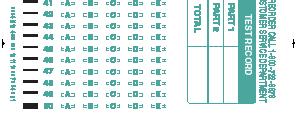
“Test-optional has made it, from a business perspective, a wonderful opportunity for [schools] to have a lot more applications, which brings a lot more money in for more merit scholarships as a result of having a little bit more revenue,” she said. College readiness can be measured by letters of recommendation, transcripts and extracurriculars, but private SAT preparation counselor Barak Moore said such measures are not always reliable.
“Te only part of the college admissions process that we have a very good idea is a student's own work is the SAT or the ACT. Cheating is rampant in schools. GPA is so infated as to be nearly meaningless,” he said. “At the end of the day, even if you've been taught by a great school or a great teacher or even a private tutor, the test is your work.”


“I’m in the ninety-something percentile nationally for my ACT score, but that’s sixty-something for Massachusetts. It's a wild diference,” he said.“It's tough because these are the people that I will be competing with to get into college.”
In addition to pressure on the state level, Tevet-Markelevich said that South fosters a competitive college environment that makes it hard to separate oneself from the application process.
“[Pressure to get into a selective college] is so deeply rooted in the school community that even if you're switching out students every four years, it's going to stay. It’s going to stay there with the teachers. It's going to stay there with how colleges look at things,” he said.
Sabet has worked with hundreds of students nationwide going through the college process, so she said she understands how rejection impacts a student on the individual level.
“It feels very personal when you get those decisions,” she said. “[For] families that don't really understand the process, who can't normalize it for kids, it can be really hard.”
However senior Kira Yoshida said that in her case, the test-optional policy at many of the colleges she applied to alleviated some stress of getting a stand-out score.
“I looked at the average scores [of each school] and just chose based on what would help me the most,” she said. “Tis was what counselors and all [my] teachers recommended.”
As a counselor herself, Buzzeo supports strategic submission. She said that if Sufolk wants more evidence before admitting a student, scores can help boost a student's application.
“We always say that [scores] are meant to help a student, never to hurt them,” she said. “Tey can help bolster merit scholarships as well.”
In a letter explaining Dartmouth’s shift back to requiring the submission of standardized testing results, President Sian Leah Beilock said, “with a test-optional policy, prompted by the pandemic, we were unintentionally overlooking applicants from less-resourced backgrounds who could thrive here.”
Managing Director of Democrats for Educational Reform (DFER) Erin Cooley referenced that same study when she said that despite diferent access to crucial study resources, standardized tests help level the playing feld for underrepresented students.
“Scores like an SAT or an ACT represent a valuable tool for identifying high achieving applicants from more low or middle-income backgrounds, or from schools that just aren't
When I started to see the same learning profle being harmed by testing, it was clear that [MCAS] was not the great promise that was supposed to level the playing feld. It was preventing all learners from being on the feld.
Deb McCarthy MTA Vice President

as well known to those institutions,” she said. “It does allow for a broader and more diverse range of students into those universities.”
While the SAT and ACT are used to determine college readiness, Massachusetts uses standardized testing to ensure that students are at the profciency level appropriate for their grades.
Te MCAS assesses how public school districts educate their students through yearly exams on Mathematics, the English Language Arts and different areas of Science and Technology. Cooley said districts who score below average receive state assistance.
“[MCAS is] a way for individual students and teachers to understand how they're performing academically by getting those results back,” she said. “If you're a district that has really high achieving White and Asian students, for example, but your Hispanic, Latino and Black students are performing at a lesser rate, there's something happening there that's worth digging into.”
Despite the benchmark for profciency that MCAS provides, Massachusetts Teachers Association Vice President and former ffthgrade educator Deb McCarthy said that current education strategies provide more efcient ways of regulating education.
“[MCAS] is just a snapshot in time,” she said. “MCAS as a benchmark is really kind of outdated. I don't need a billion-dollar testing industry to tell me how my students are doing,” she said.
Attleboro Representative Jim Hawkins said that the nature of MCAS doesn’t allow it to be an efective tool for measuring students’ learning.
“Tis is a punitive test for the students. It won't help them a bit because the results don't come [out] until the following year,” he said. “So if they pass or do well on it, it's not going to get them into better classes. It's not going to do anything for them.”
After a year on the House foor, Massachusetts legislators have passed the THRIVE Act on to the Senate, proposing the elimination of the MCAS graduation requirement for public schools.
As Massachusetts is only one of eight states with this requirement, the bill aims to replace standardized testing with academic work in classrooms that would enhance the curriculum instead of forcing educators to focus on the content covered on the test
Hawkins, a THRIVE petitioner, said that the act allows students who may perform poorly in testing environments to graduate.
“Tere's going to be a graduation requirement, but it should be based on what you've done over 12 years, not what you did in two hours,” he said.


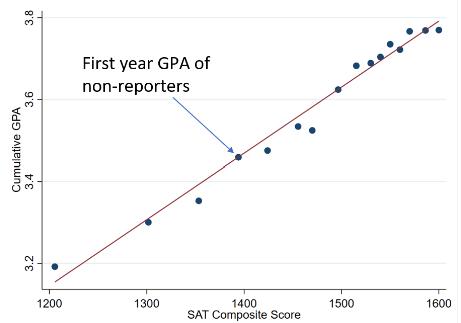
McCarthy said that the stress the test causes does not allow students to properly showcase their skills, unlike the alternate methods of assessment proposed in THRIVE.

“Educators focus on the kids who struggle sometimes, but my straight-A students were also experiencing extreme anxiety,” she said. “Students are doing really well out there in the real world, but it has nothing to do with how they did on the MCAS; they are successful because of their ability to work collaterally, to think outside of the box, to have great judgment skills, to be responsible and accountable. Tese are the skills that have provided them with success, and are proposed in THRIVE.”
However, South students don’t feel as much pressure to perform well on the MCAS. Tevet-Markelevich said this feeling is due in large part to his teachers, who have said the test would be easy for South students like him.
ago, its requirements and format have evolved. However, McCarthy, who has taught since MCAS’s establishment, said that those small changes — moving from a paper to a digital format or raising the minimum passing grade — have done little to address underlying issues in education, in some cases even exacerbating them.
“When I started to see the same learning profle being harmed by testing, it was clear that [MCAS] was not the great promise that was supposed to level the playing feld. It was preventing all learners from being on the feld,” she said.

Students with learning disabilities often struggle to perform well on standardized testing, resulting in discouragement instead of improvement.
Even so, Moore said that these tests provide an important and equitable data point.
“Of the people I've talked to — we do live in Newton, so my perspective is skewed — they have never had a problem with the MCAS as being hard aside from just being tiring,” he said.
Cooley said that these tests are not designed to be difcult, but merely a measure of state expectations for education.
“It's potentially doing a disservice to students if we take away that benchmark and just keep moving forward grade after grade and say ‘you're ready for the world ahead,’ yet you can't meet a minimum standard in high school,’” she said.“Tat's potentially setting that student up for failure after high school, inequitable and unfair to our kids.”

Since MCAS’s introduction 25 years
“[Standardized tests] provide a wonderful piece of information for college: who's ready for college and who's not. But also, it helps young people get ready for college, and there's so many resources now,” he said.“Every year it's more and more fair; there are more and more resources available. It's a wonderful system and changed my life for the better.”
Cooley said that the changes being made with the SAT and ACT provide a model for other areas of standardized testing.
“We continuously need to be improving not only on things like assessments, but everything that goes [into education]; there's so much ebb and fow,” she said. “Student populations are changing drastically since some of these policies were adopted, so we have to be able to study the information and make changes based on what we're seeing in the data.”




Full-length SAT diagnostic test provided Personal score-boosting tips
Content developed by experts from MIT and Harvard
Target students’ individual strengths and weaknesses
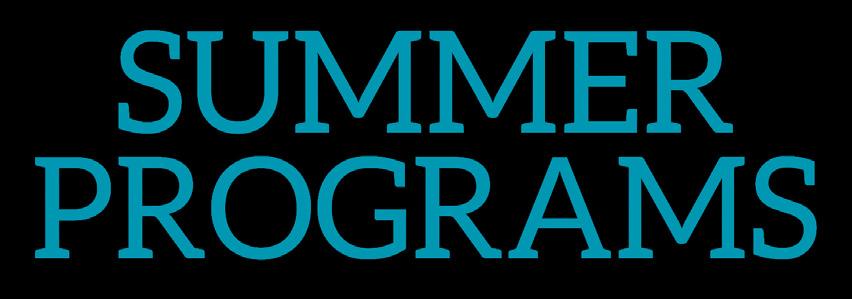
Take academic classes in the morning and participate in fun, educational workshops in the afternoon
Workshops in test taking, public speaking, professional development, animation etc
Gain experience in a variety of fields
Academics and soft skill development
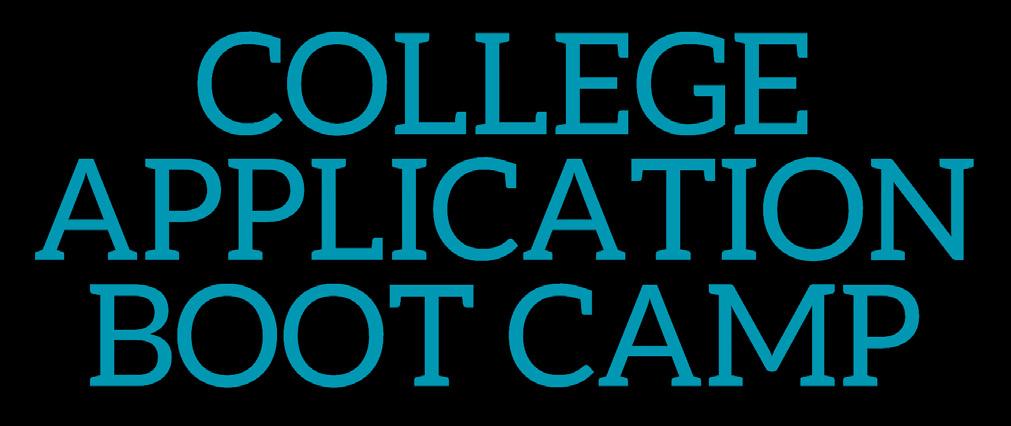
Learn how to get admitted to Ivy League Schools
Individualized admission essay coaching
Building a strong resume Mastering interview skills

Improve your GPA with advanced high school courses!
Writing and public speaking (grades 8-12)
Math: Algebra II, Geometry, Trigonometry and Pre-calculus (grades 8-12)

Ramadan is often simplifed to a monthlong fasting routine, but for the many Muslims around the world, the holiday marks one of the most important times of the year. For those at South who observe the holiday, the month of celebration is a signifcant change from their usual lifestyle.
Tis year, Ramadan, the holiest month of the Islamic Hijri calendar, spanned from March 10 to April 9. From sunrise to sunset, Muslims traditionally abstain from food and water and partake in rituals such as prayer.
Junior Remaz Kaaber said she looks forward to Ramadan as a time to improve herself as well as an opportunity to connect more with her religion and other Muslims.
“I get very excited,” she said. “I'm happy that Ramadan comes back every year because it's a good refresher for our souls and our bodies.”
Ramadan observances typically involve waking up before dawn for “suhoor”, the morning meal, and breaking fast in the evening with “iftar”, often enjoyed with friends and family. Teaching assistant Raniah Atieh said that these celebrations are an exciting occasion.
“My kids like it because they all get to pick what dinner and what desserts they get to have,” she said. “Every day is a big feast. I think of it like Tanksgiving every day for 30 days.”
Freshman Halima Rafat said observing Ramadan through fasting has helped her be more empathetic.
“It's important to [be] understanding of people who are less fortunate,” she said. “It makes you more grateful overall. Tat's the goal of it.”
For senior Taban Malihi, Ramadan is a test of persistence. She said that she views her ability to maintain discipline while fasting as proof that she can accomplish anything she
puts her mind to.
“I keep it going because it's hard, but everything is hard in life,” she said. “If I can make it through this month, what can't I make it through?”
Student afnity groups such as MSU (Muslim Student Union) and MESWANA (Middle Eastern Southwest Asian North African Coalition) have served as places for Muslim students to congregate. Although MESWANA is a cultural rather than religious club, freshman Judy Othman said she values the group’s strong community.
“When I go to MESWANA, they talk about [Ramadan]. It's really nice because [they’re] not all Muslim, but they all understand,” she said.
To accommodate religious expression, South has designated a room in Goldrick Commons as a year-round prayer room for students.
Having campaigned for the creation of the space as a South senator, Malihi said that praying at school nevertheless remains challenging.
“It's hard to know when the room will be empty [and] when it can be used,” she said. “I [usually] just go home and do all my prayers at once.”
Freshman Dania Hlail said she appreciates teachers’ support during Ramadan.
“Tey understand that it could be hard for me to fnish assignments because I am fasting,” she said.
Although Atieh has seen awareness of Ramadan increase in recent years, she said that she would like to see Newton Public Schools host an iftar dinner in the future for students of all grades.
“It would bring diferent people [together], whether from the elementary, middle
or high schools, to just feel united,” she said.
However, world religions teacher Katherine Wildman Zinger said that one obstacle in conducting such an assembly is that public schools are required by law to remain secular.
“Public schools don't specifcally observe a holiday [due to] the First Amendment,” she said. “We sit in a neutral space.”
Malihi said the lack of a general understanding of Islam is expected for a minority religion, but that more awareness at the administrative level would be ideal.
“If you see a student about to pass out at 3 p.m., it’s probably because they didn't sleep very much last night. Tis kid was probably up at 5 a.m. eating a meal,” she said. “It would be helpful if all teachers were made aware that it's Ramadan.”
During a consequential month for many students, Malihi said that non-Muslims can be allies to those celebrating Ramadan.
“Just emotionally support them,” she said. “Remind them that they're awesome for doing this, and they're really strong and brave.”

From smashing wooden planks in taekwondo sparring matches to captivating over 500 students to win the annual sophomore speech competition, Ellis Brown can pull of any performance and leave his audience in awe.

Brown’s speech centered around the necessity for a return to respectful arguing. He said he chose the topic because of his passion for civil discourse fcient debates, which he said often occur today. “In the guments that people are not at’s always frustrated me because I feel the only real way to work things out is to get down to the root of it and talk things out,” he said. “Tat made me feel as though I have to get this [message] out there.”
In his speech, Brown connected a lack of empathetic listening to the US government’s decline in productivity.
“I was advocating to bridge the gap between opposing ideologies and start getting things done in the country,” he said. “We need to start having civil disagreements so we can reach a consensus and move forward.”
During the NTA strike in January, many students treated the time of from school as a vacation. Brown, on the other hand, said he used the extra free time to perfect his speech.
“I'd written the frst draft of the speech, but I needed to rewrite it and make it actually sound good, and the strike gave me two weeks to do that,” he said.
After being nominated by his English class to proceed to the semifnal round of the speech competition, Brown advanced to the final round, where he formed his speech in front the entire sophomore class.
“I was just trying to not stress out,” he said. “The scariest thing is getting out there and starting to speak, but once you start to speak it comes out very natural.”
Outside of class, Brown does debate and is a frst-year member of South Senate. Brown said his involvement with student government has given him insight into the inner workings
of real-life politics.
“It shows you how many steps there are of passing legislation,” he said. “As someone who's interested in political science, I'm very glad to have done it.”
Another of Brown’s pursuits is taekwondo. Soon after meeting junior Yuna Choi at the US Taekwondo Center in Waltham, the two started South’s taekwondo club.

“I can tell he's always practicing. He's always trying to reach his limits,” Choi said. “[I admire] his dedication and ability to stick with what he wants to do and work hard.”
Choi and Brown per formed taekwondo sparring together at Tertulia and Asian Night, which were much enjoyed by their audi-
I would normally so I represent taekwondo in a good light,” he said. “[I want to] show all my friends, ‘hey, this is what I'm very passionate about.’”
Brown’s character also shines through in the classroom. His history teacher Jennifer Morill said that Brown’s personality lifts her classroom’s spirits.

“He's just such a positive, kind person,” she said.“I think he is a role model, and someone who pursues things he nds fascinating, and gives them his all.”
Sophomore Sydney Hanley, Brown’s neighbor and childhood friend, said that she appreciates his generosity and compassion.
Brown said that he gets nervous on stage even though dent in his taekwondo
“Whenever I'm performing, I feel like I’m in a position to try and do better than
“He is an extremely selfess person,” she said. “He always pauses things to help people and puts other people frst.”
Amanda Bastien, Brown’s math teacher, has noticed that he always helps other students in class when they struggle to understand the content.
“People look up to him,” she said. “He's not just the model student, but the model person that you want to see come through the school.”
From his math classroom to the taekwondo foor, junior Ethan Cheng, Brown’s debate partner, said that Brown leaves a strong impression everywhere he goes.
“I don't think you can fnd a single person who does not like Ellis,” he said. “He's engaged in a lot of diferent communities, pulling people together. He’s a very community-centered man.”
With performances featuring everything from a capella singing to improv comedy, South’s annual Tertulia performance gives students an opportunity to take center stage. Tis beloved tradition has been strengthening the South community through the power of performing arts for 25 years.
Te frst day of celebration was held on May 26, 2000, in honor of student and dancer Maxine Celeste Chansky, following her tragic passing.
For many students, Tertulia is a chance to showcase hidden talents. Sophomore David Rosemberg, who has performed at Tertulia for the past two years, said he enjoys having the opportunity to share his passion for singing. Tis year, he performed an original song.
“Holding Tertulia each year gives ev -
eryone an opportunity to express themselves, whether it be singing or doing some sort of cultural performance,” he said. “It truly makes a diference.”
Newtones, South’s student-run acapella group, also performs at Tertulia every year. Senior Sarah Hayward, the group’s leader, said that due to its level of vulnerability, performing at Tertulia brings the group even closer.
“Every performance we get closer, but [we get closer] especially with something like Tertulia where it's in front of our peers who we see every day,” she said. “It's a little bit more scary because it's a little more personal.”
Festies, South’s student-run community service chorus group, performed at Tertulia as well. Festies coordinator and music teacher Ben Youngman said that performing in front of peers requires bravery, and those who step up to the plate should be applauded.
“Anyone who’s been on stage knows that
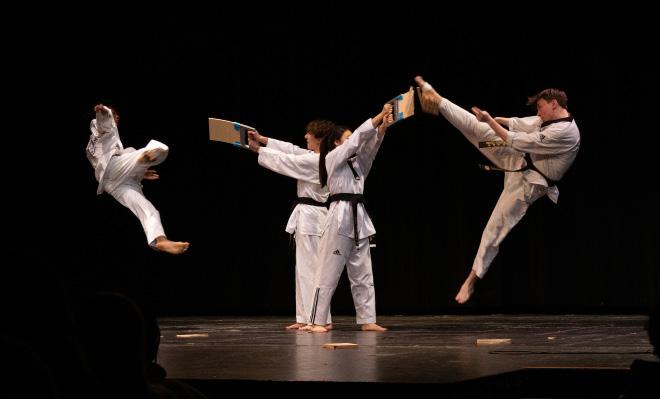

[performing is] a whole lot harder than it looks,” he said.“[Tertulia] is something where there really aren’t losers… everyone is a winner, simply because they’re putting themselves out there.”
English teacher David Weintraub, the event’s lead organizer in 2021, said the experience of watching Tertulia for the frst time in his early years of teaching at South propelled him to take on the role.
“Tere were kids in my class who never raised their hand once … and they were up on stage, singing and dancing and doing folk art,” he said. “As much as I do in the classroom, there are so many more ways in which students develop their talent, become who they are and show what makes them special.”
With so many gifted members of the South community, Tertulia allows students to have their talents recognized in school. Sophomore Boston Bulis, one of Tertulia’s student organizers, said the performances showcase the wide variety of talents around South.
“People get to show of something that
they do outside of school, and I think that's really cool,” Bulis said.
Tere are a variety of ways to be involved with Tertulia besides performing. Although senior Zoe Hong did not perform in the production, she has managed to fnd her place working behind the scenes.
“I do not have a musical talent worth performing on stage, and have found my strengths to be better used backstage with the organization management piece [of Tertulia],” she said.
While Tertulia strengthens the South community as a whole, it also draws attention to the overlooked performing arts department, a result of South’s hyperfxation on academics.
Although academics are important, Weintraub said that recognizing community members’ other show-stopping qualities is crucial.
“I just treasure this day so much.” he said. “I think it's the only day that we have at South where all of us are engaged in community and not just academics.”
photo contributed by Ellis Brown, graphics by Clare Cho photos by Tayer Bialek South's Taekwondo club performs an act at the 25th annual Tertulia performance.






At school, they're nurturing up-and-coming high school students.
At home, they're caring for children of their own
By Anyssa LinToo often overlooked, the new parents on South’s faculty are no strangers to the constant grapple between two sets of dearly-loved responsibilities.
In a job already requiring countless outside-of-school hours, the added duty of being a full-time parent creates a new layer of complexity. Teachers with young children are forced to continually adapt to preserve the balance between their job and family.
History teacher Jenni Bement said her life has changed in many respects since having Fox, her now three-year-old toddler.
“It was really exhausting,” she said. “My kid wakes up before six almost every single day.”
Planning lessons, providing feedback and grading assignments all comprise the less visible aspects of a teacher’s workload. Bement said she has been forced to shift her schedule to accommodate her
“Often, between 7 and 8 a.m., I'll just be sitting on the couch while Fox is watching Cocomelon,” she said. “I'm typing, creating presentations and updating things.”
English teacher Joe Golding, whose children are now 15 and 17, said that his re sponsibilities as a frst-time parent prompted a slowdown of his teaching workfow. As a result, he said that he handed back papers more slowly, gave fewer comments and planned classes less efectively.
“Te hardest part is all those minutes that are required outside of school,” he said. “A great teacher responds to emails, gives comments, all of his lessons are wow. [Being] that kind of a teacher means taking that
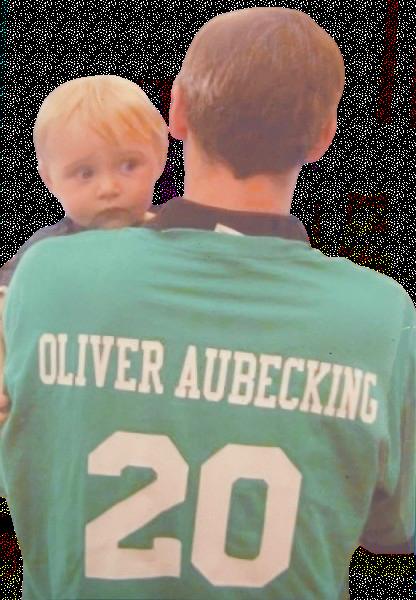
tually very valuable.”
Principal Tamara Stras, whose daughter,



need some support, people in the community are willing to help you,” he give you the space that
History teacher Julie Masi, whose son, Caleb, is one-and-a-half years old, said she values interacting with children in varying stages of life.


“I love teaching [and] helping high school-age students,” she said.“But it's also great to go home, be on the foor playing with my kid and using my brain in an entirely diferent way than [the] past eight hours.”
With the recent Newton Teachers Association (NTA) strike, the issue of parental leave garnered increased attention as a major sticking point in contract negotiations.
Masi said that the pre-strike leave was not enough, prompting her to extend her time of before returning. She said that part of her reasoning included weighing both physical and emotional changes of having a baby.
Tere's so many things going on,” she said. “It's a very exciting and happy time, but also anxiety-inducing and stressful.”
Te parental leave agreement in the new contract guarantees teachers 40 days of paid leave and a maximum of 60 days overall. Masi said that while the agreement isn’t perfect, the change is a step in the right direction.
“It is defnitely an improvement, [but] I still think it could be better,” she said. “Tis parental leave problem isn’t just unique to Newton. It’s across the board in education.”
History teacher Zakarias Gomes said that even though he was able to take 40 days of paid parental leave, parents like him need more time to connect with the newest additions to their family.
“Even for the non-birthing parent, [parental leave] is really important,” he said. “I needed more time to be there with my child because it's a really important time period to just be with your immediate family and to help out.”
Despite the taxing experience, Bement said having a child was worth it.
said Bement. “ wouldn't let reasons like in the way.”
while sacrifices in both teachers’ sonal and profession al lives are inevitable, family should always come everybody to re that a job is a job,” she family is your family. your priority.”

Imagine a scene: a dark, smoke-flled room with colorful poker chips resting on the green velvet table, furrowed brows and contorted faces carefully calculating their next move. Now cut to today: young and eager play ers attempt to keep their poker faces straight, the classic blue, red and black poker chips replaced by potato chips which their friends are unable to resist sneaking a bite of.
popularity among high school students, especially in South’s senior class. Students have gotten involved in games with friends after school, on the weekends and sometimes even dur ing class. But how has this centuries-old card game become so popular among the student body?
comeback is due in large part to the simplicity of the game’s rules and the possibility of winning. Senior Jacob Masso accessibility of the classic card game gets stu dents excited.
it’s easy to learn and play. in it, but players think that they can win every time,” he said.
many students have bonded over the game.
“It gave us something to do and brought my group of friends together on weekend nights,” he said. “Tat goes alongside the fact that it's a fun game. We play low stakes, but involved,” he said.
in a game of cards. Tis renewed buzz around poker has also hit the sophomore class, as “Casino Night” was the theme for the annual grade-wide dance. Sophomore class ofcer Aleeza Amitan said the game’s popularity among the senior class

Senior Adam Rotberg said because poker serves as an outlet for friendly competition,
Learning the strategies of the game can greatly help one’s chances of winning some money. Tat being said, nothing trumps luck
e seniors talked about how their grade has an addiction during class ce meetings, so we kind of had an idea from there,”
Sophomore class president Owen Butler said the excitement and energy surrounding the oldschool activity contributed to deciding the
“I think teenagers generally like to do adult things, and in society, gamat’s pretty much the main reason and games of luck are
Most of the poker games students play involve money, often leading to debates and friendly arguments over who owes whom. is intense competition is responsible for its growing popularity among teenagers, who love the thrill of beating their friends. But just how likely is it that the game gets taken too far and students start to seek out this winning feeling over and over again?
Naturally, one risk of playing games for money at a young age is that it could lead to
a gambling problem later on in life. According to Algamus Recovery Services, teens are two to four times more susceptible to developing a gambling problem than adults, as the parts of their brains necessary for making good decisions have not yet been fully developed. Tis can lead to poor decisions and the loss of more money.
Rotberg said poker’s enticing elements could lead to future addiction.
“You get a rush from playing poker,” he said. “I could see how some people could enjoy that rush and let it get out of control too easily.”
While the potential for developing a gambling addiction may be concerning, senior Luca Del Porto said he recognizes these risks and plays responsibly.
Tere is a golden medium, as in everything,” he said.“An excess would probably lead to a gambling problem, but playing in moderation and for low stakes can reduce the likelihood of such a problem.”
It gave us something to do and brought my group of friends together on weekend nights. Tat goes alongside the fact that it's a fun game.
The Roar follows four seniors with different interests as they navigate the college application process. Their identities will be revealed as they make their decisions
By Teo Younkin
Accepted to the University of New Hampshire (UNH), Nichols College, the University of Western New England, American International College and Franklin Pierce University, Tom* will hear back from Rutgers College in the coming weeks.
Now, the focus of Tom’s college journey has shifted from applying to committing. While his top choices are Nichols College and UNH, he has yet to select the school he will attend.
Tom said that while receiving his acceptance letters was relieving, he didn’t experience the ecstatic reaction that is, for many, synonymous with college acceptances.
“I didn't feel like it was a crazy thing, like how a lot of other people [experienced it],” he said. “It was more like [evaluating] the fnancial aid or the merit money I got from one school as compared to the others and fnding the best afordable education possible.”
Tom said that while planning for the future can be stressful, other students in his position need to focus on making the decision that’s best for them.
“Keep your priorities straight and do what's best for you, not what other people think is best for you,” he said. “Stay true to what college you want to go to and what you believe in. At the end of the day, it's your life, and it's going to be the next four years of your life.”

Rose* was accepted to the Pratt Institute, the Rhode Island School of Design, the School of the Art Institute of Chicago, the Savannah College of Art and Design, the California Institute of the Arts and the Maryland Institute College of Art.
While she has yet to ofcially commit, she plans on attending the Pratt Institute. She considered a variety of factors while making her decision, but ultimately, it hinged on the colleges’ afordability and location.
For students like Rose who applied to art schools, submitting a portfolio made their applications feel personal. She said that as decisions arrive, it’s challenging for applicants to separate their competence as artists from a rejection.
“It felt almost like a competition. If you got in, that was a marker that you're at a certain level in your art and artistic abilities,” she said. “If I hadn’t gotten in to a school, I would mostly blame it on my art skills and not at being the level where the school needs me to be.”
Rose said that while committing adds a new layer of stress to the process, above all, she can’t wait to explore her future in college.
“I got the opportunity to teach one of our family friends in art recently, and that has brought [me] so much joy," she said. “I'm really excited to do that with the rest of my life or in college."

Ben* was accepted to the Berklee School of Music, the New School, the New England Conservatory and waitlisted at NYU Steinhardt.
Now tasked with committing to college, Ben* is investigating the programs available to him at the schools where he was accepted. He has yet to make a fnal decision.
Ben said that while the application process itself was inherently stressful, he enjoyed having the opportunity to make connections with other musicians during his auditions.
“I got to meet a lot of people from all over the country and also people I knew before the audition process started,” he said. “Te number of people who have been willing to help out, even random people who I don’t even connect with all that often … [has] been super awesome to see.”
Ben said that he hopes college will provide an opportunity for him to expand his abilities and challenge himself as a musician.
“I defnitely want to consider studying the kinds of music that I'm currently studying, but I also want to broaden out into other areas that would make me more employable, he said. “Tere's a lot more to learn than just what's available to me right now.”
*Names changed to protect students' identities

hroughout the monotonous month of March, fans food sports bars, focking to see the end of a college basketball game, eyes glued to TVs as they watch upset after upset, their brackets dying slow, painful deaths. Commercials, plastered with the faces of the tournament’s biggest names and best players, break up the fast-paced action with a catchy jingle.
Tis year, women’s college basketball took center stage in a historic fashion.
Caitlin Clark. For those of you who have only heard her name in the context of her never-ending State Farm commercials or have been living under a rock, the sharp-shooting Iowa point guard had a record-breaking senior season.
She became the all-time leading National Collegiate Athletic Association (NCAA) Divi-

sion I men’s and women’s scoring leader. Clark made the most three-pointers in a single season by any male or female Division I player.
She broke the record for the most career assists in NCAA tournament history all while leading the Iowa Hawkeyes to their school’s second straight National Championship game.
But this season wasn’t just a historic one for women’s college basketball, it made extraordinary strides for women’s sports altogether. South Carolina’s victory against Iowa in the championship game drew 18.7 million viewers across ABC and ESPN, cementing the game as the most-watched basketball game since 2019.
Te game’s audience saw an 89 percent jump from that of last year’s women’s championship, and was the most watched women’s college basketball game since 1992. Iowa’s
back-and-forth contest against the University of Connecticut (UConn) in the Final Four averaged 14.2 million viewers on ESPN, drawing the largest audience for an ESPN basketball broadcast — including men’s collegiate and professional games.
Ticket prices sky-rocketed as the average price sold for the women’s Final Four ($2,323) was more than double the price of a ticket to the men’s Final Four ($1,001).
Tis attention on women’s college basketball is long overdue. Trailblazing women like Lisa Leslie, Dawn Stanley, Maya Moore, Diana Taurasi and Brittney Griner have changed the game and accomplished feats never achieved before.
Clark’s undeniable ability to draw you in and take your breath away as she efortlessly knocks down shots from the logo has directed
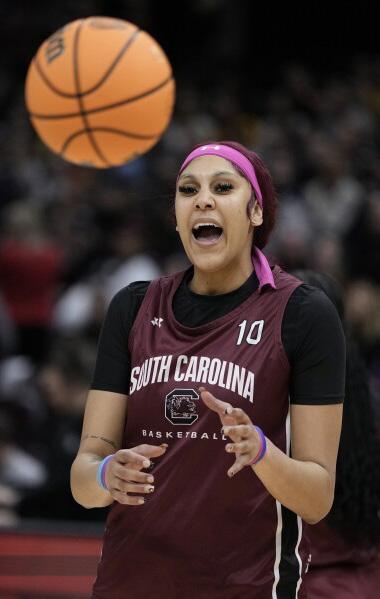
the eyes of the country towards women’s college basketball. She may draw the spotlight, but on display is a plethora of talent across the sport.
Tis year’s tournament featured some of the most intriguing matchups in the history of women’s college basketball due in large part to the parity of star players at diferent schools.
Te South Carolina Gamecocks, who went undefeated in the regular season boasting a record of 33 wins and no losses, took care of business against Oregon State in their Elite Eight contest.
Te Gamecocks, led by the strategy of revered head coach Dawn Stanley, have earned 109 wins and 3 losses since the 2021-2022 season.
South Carolina controlled the paint all season long thanks to the powerful presence of
6'7'' senior Kamilla Cardoso. Te dominance in the post paired with the strong outside shooting and guard play of sophomore Raven Johnson, senior Te-Hina Paopao, freshman MiLaysia Fulwiley and freshman Tessa Johnson helped South Carolina secure its third National Championship.
University of Southern California (USC) ’s freshman phenom JuJu Watkins led the Trojans to a number one seed behind her historic frst season at the collegiate level, scoring the most points ever by a freshman in NCAA history.
Watkins’ ability to score efciently from three and Euro-step her way to the basket proved incredibly dominant as the Associated Press (AP) First-Team All-American broke USC’s record for most points scored in a game with her 51-point outburst against Stanford in

the regular season.

senior First-Team All-American Angel Reese, a relentless post player, and sophomore Flau’jae Johnson, a dynamic point guard.
Reese was a force in the paint for the Tigers as she averaged a double-double in points and rebounds throughout the regular season. Te defending champion Tigers fell short in the contest as Clark scored 41 points and Iowa achieved redemption.
North Carolina State reached the Final Four behind the eforts of its impressive backcourt. Junior guards Saniya Rivers and Aziaha James led the way for the fourth-seeded Wolfpack who knocked out number two seed Stanford and number one seed Texas en route to the Final Four.
With millions of eyes on women’s college basketball this past March, the rich talent of these women have shone brightest, undeniable

With just eight players healthy and eligible to play, the injury-depleted UConn Huskies reached the Final Four behind the brilliant play of Paige Bueckers. Bueckers, a First-Team All-American and the frst-ever player to win National Player of the Year as a freshman to win National Player of the Year, had an impressive season.
Bueckers sufered two season-ending injuries that kept her of the court for both her sophomore and junior seasons, yet she had a highly productive season and showed up huge when the lights were brightest.
In an Elite Eight matchup that doubled as a rematch of last season’s drama- f lled championship game, Louisiana State University (LSU) took on Clark and Iowa. LSU was led by
for viewers of all genders, ages and races. With Clark, Reese and Cardoso all graduating and taking their talents to the Women's National Basketball Association (WNBA next season, there is so much reason for excitement around women’s basketball.
Fans who have watched in historic numbers this past season should continue following the careers of these stars and food sports bars as they invest their time into the incredible and exciting talent present in the WNBA.
As shown by the fervent buy-in this past March, the talent of female athletes has always been elite.
When we fnally give these athletes the recognition they deserve, everyone wins, even if your bracket was busted in the frst round. It’s okay, it happens to the best of us.
As the inevitability of college arises for many at South, volunteer hours become a key aspect for many aspiring student’s applications. While volunteering can take a variety of forms, coaching youth basketball has remained a popular activity for students at South.
The Newton Athletic Association (NAA) has run a youth basketball program at Brown Middle School for many decades. Many alumni from South returned as coaches this past season, building on exciting memories and continuing to make more.
Former NAA player and sophomore Yoni Shavelsky said that he has loved being a part of the organization.
“I played in the league my whole childhood,” he said. “It was a big part of my life, and I wanted to stay [involved] in the league and enjoy the coaching aspect of it with my friends.”
An underdog going into the playofs, Shavelsky’s squad emerged victorious in the championship game, winning by a score of 40 to 34 over fellow sophomore coaches’ teams. Shavelsky said that he appreciated the newfound camaraderie between his teammates.
“When you get your team at the beginning, nobody really knows each other,” he said. “Te [players] developed so much throughout the year.”
While players learned the importance of teamwork by working with friends, coaches schemed winning strategies against many of their own. Junior Ben Briansky said that he enjoyed facing of against friendly faces.
“Competing against my friends who are
also coaches was so fun,” he said. “Tis year, everyone I went against was one of my friends.”
From light-hearted trash talk to intense debates about which middle schooler was the best three-point shooter, Briansky said that he enjoyed everything about the league.
“It was just fun to talk smack about each
Mitchell Lookner & Isabella Starkman Sports Reporter & Sports ContributorWith the lights beaming around a stadium of thousands from every angle, a competitive atmosphere emerges as both teams square up to make sports history. But what if these teams met on this battle
What if they had matchups talking and buzzer-beaters that left one team in heartbreaking defeat?
Tis is the art of rivalry, an aspect of sports that has slowly faded in recent years. Nonetheless, several rivalries have stood the test of time: the Red Sox-Yankees rivalry, dating back to before tele vision was invented, and the Habs-Bruins rivalry, which has featured 125 diferent hall-of-famers.
Te deep history between these teams for a must-watch every with a chance for players and fans to prove superiority.
Undoubtedly the greatest baseball rivalry of all time, with some of the best storylines to go along with it, the Boston Red Sox and the New York Yankees have an unmatched hatred of one another, dating all the way back to the early 1900s.
While most between two equally matched teams, the Yankees hold the upper hand against the Red Sox, having won a whopping 18 more World Series championships than their arch-nemesis.
“We did everything right, we got to the end, we scrimmaged,” he said. “We couldn’t have asked for a better team.”
Productive practices were common among many playof teams, and coaches who could successfully manage middle schoolers
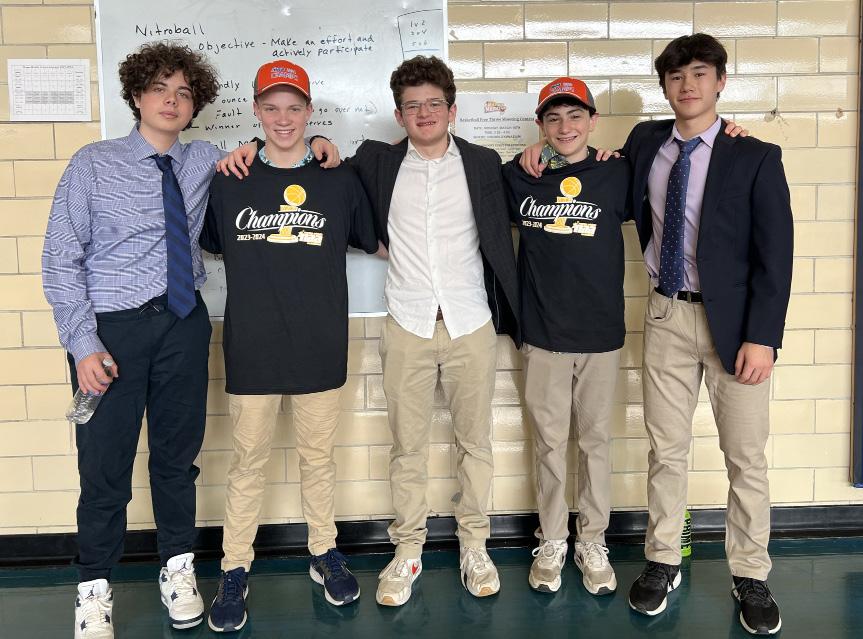
other's teams,” he said. “Te competition was always tense, but fun.”
Although most teams usually relied on one highly skilled player, the importance of practice was not lost on successful teams. Sophomore CJ O’Toole said the efciency of his team’s practices was key to their deep playof run.
saw positive results on the court. In contrast, some teams found unproductive practices a detriment to any in-game success.
Junior Vivi Shreve said that her team seemed to be distracted in practice throughout the season, a product of middle schoolers’ immaturity.
“I think my team was on a sugar high all the time,” she said. “It was hard to get stuf done, and that became prevalent during games.”
Unrelated to the amount of wins or losses a team experienced, many coaches said they enjoyed their seasons for a diferent reason. Reid Matzkin, coach of the ffth grade “LSU” squad, said NAA was vital in establishing important relationships and communities.
“I played NAA my whole life,” he said. “I wanted to give back and coach a team … it’s really fun to have such a close knit community.”
With many former players now coaching within the league, the nostalgia of middle school basketball and the prospect of recreating that same positive experience for others was a feelgood factor in motivating South students to coach. Brianski said that was the case for him.
“I got a very similar experience when I was younger,” he said. “Getting to know my coaches really well and building a really special and strong bond with them, and being able to build it with these kids has been really nice.”
NAA has been a Newton mainstay for years, and longtime Newton resident Marc Heimlich who played basketball in NAA in the 1980s said that the league brings enjoyment for students and players.
“My coaches for the most part were South students,” he said. “Even as coaches fulfll their volunteering hours, many are already looking to return next year with a renewed hunger to win and compete against friends.”
When refecting on the recently fnished season, Briansky said that the bond created between middle schoolers and high schoolers is what made the league so exciting.
“Tey’re like little brothers to me,” he said. “Tat’s my favorite part of being an NAA coach.”
Despite this diference, it is always a battle
time series, winning 470 games, losing 353 and

culture, there has been no rivalry like the one between the Boston Bruins and the Montreal Canadiens. Tese teams have played each other 938 times, with the Canadiens leading the all-
Centre when one of these teams plays each other because something is going to go down, whether it be on or of the ice. One of the most historic rivalries takes
place in college basketball. Te Duke Blue Devils and University of North Carolina (UNC) Tar Heels have met 262 times, dating back to rst game in 1920. While UNC has a better overall record, it’s Duke who has more
The powerhouses compete in the Atlantic Coast Conference, and due to their well-known rivalry, have two games circled against each other on their calendar every year. e whole country tunes in to watch the home fans rally behind their school while shouting
If you look up the definition of a dictionary, a Duke’s home arena, Cameron Indoor Stadium, and UNC’s home stadium, the Dean E. Smith Center, will be
e school’s only meeting in the NCAA Tournament was perhaps the most exciting of their matchups, with UNC’s Caleb Love hitting a crucial three-pointer to send them to the is rivalry is right up there with the greatest of all time when it
Rivalries are the glue that holds sports together: as much as you might love your team, you often hate another team more. Tey create awesome storylines and unmatched atmospheres, and even when you're playing a team at the bottom of the division, it feels like the most important game in the world.
When you win that game, nothing can take away from that joy — except a rival seeking revenge.
College athletes are finally getting their fair share of the revenue they help generate
By Owen Halberstadt & Tyler GermainYou may have heard or seen the three letters “NIL” on a recent college sports broadcast, article, podcast or even from a friend. Tose three letters represent one of the biggest talking points in college sports today, but unless you’re a die-hard fan, you probably don’t understand why.
NIL stands for Name, Image and Likeness, a new system created to allow college athletes to make money from their respective sports through sponsorships. National Collegiate Athletics Association (NCAA) rules forbid any schools from paying their students to play for them, but NIL is a new, di way for college athletes to be compensated. College sports is an ever-growing market. According to sports analyst Mi chael Mulvihill, college football viewership rose by 12% in 2023.
With celebrities such as Hall of Fame tight end Shannon Sharpe, rapper Big Sean and even President Joe Biden out brackets in anticipation of 2024’s March Madness tournament, college bas ketball is as big as ever. But as the NCAA is rapidly expanding their viewership, the players are rarely seeing the rewards.
Some student-athletes in schools that don’t have the same fund ing as top colleges aren’t happy with their conditions, and the change in collegiate sports culture afects basketball the most out of all the sports in the NCAA, prim ing basketball teams as an arena for change. On March 5, 2024, 86% of the players of the Dartmouth Men’s team voted in favor of forming a union, the frst in NCAA history.
have been profting of of players for decades. Others question the merits of monetarily compensating students receiving an education from the institution paying them.
But the criticism of these ideas are few and far between: in a survey done by Sportico and the Harris Poll last year, it was found that nearly 70% of US adults said that college athletes should be able to receive compensation directly from the schools, and 74% supported student-athletes being able to proft from their NIL.
Te emergence of NIL in college sports has helped transform the NCAA from the step before the professional leagues to a healthy league in its own right.

Dartmouth doesn’t give scholarships to athletes, and since the team plays in a weaker conference with less marketable players who rarely get NIL deals, many of the players have outside jobs in addition to their time dedicated to the basketball program and their studies. Dartmouth’s unionization fueled a growing debate on whether it’s time for all college athletes to receive money directly from their schools.
NIL deals for college players have been met with mixed reviews. Many people agree that it’s been long overdue for athletes to receive compensation for their large commercial efect, as the NCAA and universities
Though the new systembenefts college athletes as a whole,. the deals received are not always based on merit; rather, how marketable corporations like Nike and Adidas think athletes are. For example, USC freshman guard Bronny James is currently averaging an underwhelming 4.8 points, 2.8 rebounds and 2.1 assists per game. Still, he is making the most money of any player in college basketball from his NIL deal, only because he is the son of superstar LeBron James.
Being the son of one of the most famous basketball players of all time makes Bronny James’s name-recognition extremely marketable, and has led to him getting more NIL deals than players that may have more worthy stats than he does.
Te same nepotism occurs in college

From the highs of glorious victory to the lows of crushing defeat, the emotional rollercoaster that is the world of sports is exhilarating. Whether it’s winning a game with cartoon characters or admiring the greatest underdog story in history, sports movies allow us to join in these legendary moments.
Taking the cake for our favorite basketball movie is “Space Jam''. Premiering in 1996, Space Jam incorporates a unique combination of the children's cartoon, Looney Tunes, and real-life basketball superstars. In this hilarious box ofce hit, retired National Basketball Association (NBA) player Michael Jordan must help the Looney Tunes win a basketball game, so that they can be set free from a parallel dimension, which they have been sucked into.
Winning frst place for our favorite football movie is“Remember the Titans”. Tis movie, which debuted in 2000, stars Denzel Washington and is set in Virginia, where a previously segregated high school uses their football team to put their diferences aside and work together. While only loosely based on a true story, “Remember the Titans” deals with the real and prominent issues of racism and prejudice. With an all-star cast and stellar soundtrack, what’s not to enjoy?
football. University of Texas quarterback Arch Manning, the nephew of Hall of Fame quarterback Peyton Manning, has not even started a game for Texas but receives more money than almost anyone through NIL, just because of his famous last-name.
Although new, the impact of NIL deals is already apparent. In college football, many players have started to reclass to play more in college because in some cases they make more money through NIL deals than in professional sports. University of Connecticut women’s basketball player Paige Bueckers recently declared she would be returning to college next year to keep playing, instead of declaring for the Women’s National Basketball Association (WNBA). While there are many reasons for this, one reason is the fact that NIL is sometimes more proftable than going into a professional league. People point to NIL deals’ popularity as the reason why fewer athletes are declaring.
Te emergence of NIL in college sports has helped transform the NCAA from the step before the professional leagues to a healthy league in its own right. NIL puts players on the path toward a successful career before they’ve even played in the pros, but it’s also made the discrepancy between the top programs and smaller programs like Dartmouth’s even more apparent, and as a result, more and more people are calling for all student-athletes in the NCAA to be paid.
While NIL has taken college sports in an unexpected direction, it looks like a positive change going forward for athletes and the league in general.
Out of all the great soccer movies, “Shaolin Soccer” sits at the top of the pile. Te flm follows a group of former martial artists who come back together to form a soccer team, pairing thrilling soccer sequences with comedy and a classic David versus Goliath story arc.
Last but not least, our fnal cinematic pick is “Rocky”, an iconic 1976 flm about a Philadelphia boxer named Rocky Balboa. Balboa has had a fruitless existence and doesn't know what to do with the rest of his life. When a once-in-a-lifetime opportunity to fght a champion and make a name for himself in the boxing world appears, Rocky becomes determined to try and pull of the upset of the century. “Rocky” creates a wonderful drama about a scrappy underdog the world comes to love and demonstrates the power of perseverance. It’s a drama so wonderful that it got eight sequels. Tat’s right. Eight.
All of these movies ofer something diferent to their viewers and are entertaining whether you're a regular sports fan or not. From the dramatic characterization of Rocky to the more light-hearted comedy of Shaloin Soccer, there's a wide variety of genres within the sports movies realm. So next time you sit down with some freshly popped popcorn for movie night, don’t forget about these iconic sports movies.
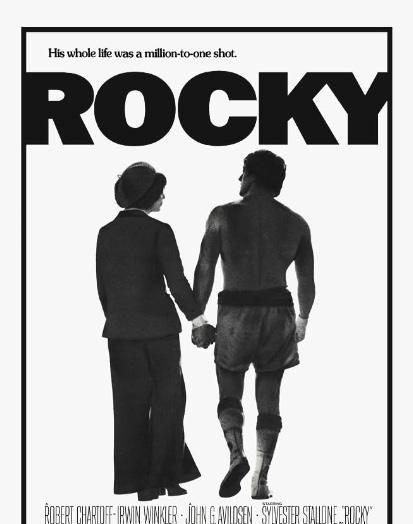
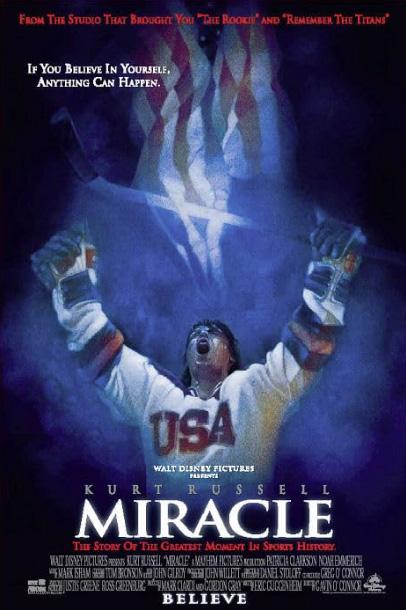
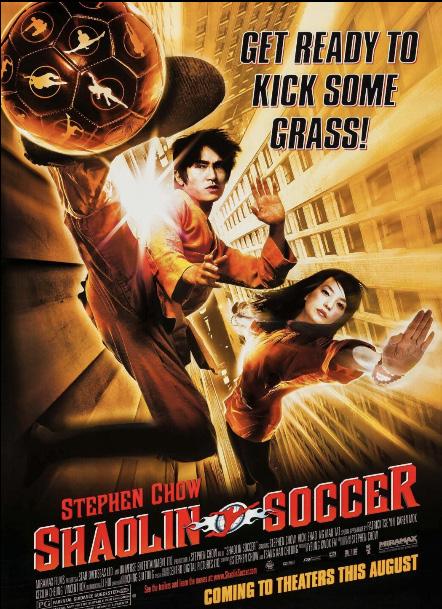


Imagine the joy a perfect family portrait can bring into your home every day

We take photos for all occasions!
Graduation, family reunions, birthdays, maternity and more!
Every connection is transformed into a timeless family portrait, articulating the bonds you cherish.

info@familiphotography.com 857-855-8222 303 Auburn St, Newton MA, 02466


posture4preformance@gmail.com
“Afer each of Michelle’s classes, my body feels connected, awake and alive.” —Denise J.
We create individualized movement programs for you to fnd strength, balance and connection to yourself.
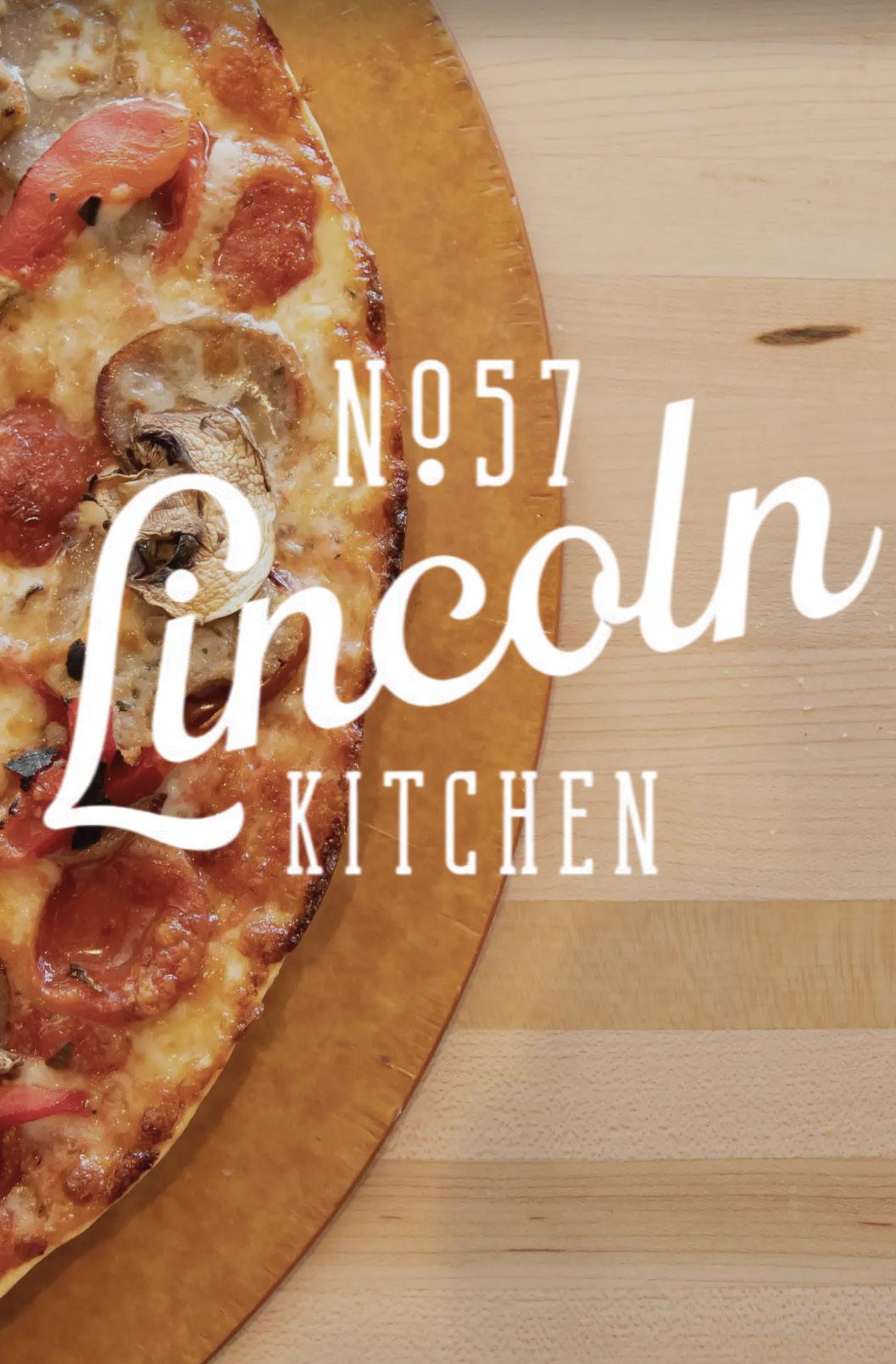
A speckling of sundries to bring some sunlight amidst the showers of spring








5) What’s the best time to call your dentist? ____-hurty
7) Name for a trendy drink-apparatus or director of “Te Shining”
8) MLB Team with 27 World Series victories
9) “Karma” singer
11) Last name of State Representative retiring on December 31


12) Song by Bonnie Taylor: A Total ____ of the Heart (also an astronomical phenomenon)
13) Sophomore speech winner, university, eye color
16) Courageous Conversations on Race
17) New type of policy afecting restaurants in Newton (also Shrek’s foundation shade)
1) Women’s March Madness Championship loser, and Mr. Rice’s least favorite state
2) Blond Managing Editor; New Yorker, Paris and Calvin & Hobbes afcionado
3) What do you call a cat with eight legs? ____-puss
4) Piece of technology that Apple recently came out with
6) Tis year marked the 25th anniversary of this South talent show
10) First word of a poker game and Beyoncé song
14) So American musician who played at TD Garden in early April
15) Quarter-long elective that is required for students
16) Women’s March Madness mega-star
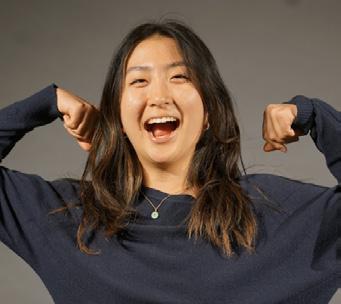
Julia Lee




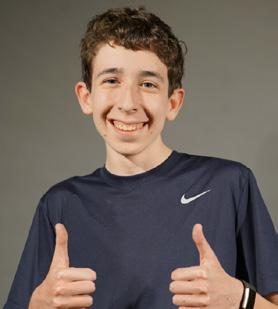
Andrew Feinberg
He may be colorblind, but he sees straight through your bullsh*t. His one faw? He's a Yankees fan.




